$3 Million Federal Investment to Boost Digital Inclusion in Lemon Hill

Sacramento State University, Sacramento City College, Valley Vision, and partners will pilot a innovative digital navigator program in the Lemon Hill community of South Sacramento.
Valley Vision is very pleased to partner with California State University, Sacramento, through the Capital Region Coalition for Digital Inclusion (CRCDI), in bringing nearly $3 million in federal funding to our region from the National Telecommunications and Information Administration (NTIA). NTIA, through its new, highly competitive Connecting Minority Communities Pilot Program (CMC), is funding Historically Black Colleges and Universities, Hispanic Serving Institutions and others across the U.S. to address pervasive digital exclusion in minority communities. This major investment will support digital equity in our region through the creation of the Sacramento Regional Consortium for Digital Equity, a collaborative of Sacramento State, Valley Vision, Sacramento City College, Cosumnes River College, and community partners to connect underserved communities with vital digital inclusion resources.
The Collaborative, led by Sacramento State, will develop a Digital Navigator Intern (DNI) program to serve the Lemon Hill community in Sacramento County. Through this program, students will be trained as Digital Navigators and deployed to Community Anchor Institutions working in Lemon Hill. Digital navigators are trusted guides who assist community members in internet adoption and the use of computing devices. Digital navigation services include ongoing assistance with affordable internet access, device acquisition, acquisition of digital skills, and application support. Sacramento State will also establish a Community Engagement Lab that will have essential software and equipment, will be staffed by the DNIs, and provide access for community training or open lab time for both the DNIs and community members.
Through the work of the CRCDI, the Lemon Hill neighborhood in Sacramento had been identified by the Sacramento Employment and Training Agency (SETA) as a priority underserved area based on demographic and economic indicators. This area has the highest poverty rate among communities in Sacramento County with populations of 10,000 or more, and became a focus for this grant. We are invigorated to take the efforts made by the CRCDI to the next level, working with Sacramento State, Los Rios and our community partners to bring digital navigators to our region. Dr. Robert S. Nelsen, President of Sacramento State, commented on this groundbreaking initiative:
“Sacramento State is thrilled that the NTIA saw the value in our proposal to help close the Digital Divide in Lemon Hill. As an Anchor University, we look forward to working with our partners, including Sacramento City College, the Greater Sacramento Urban League, La Familia Counseling Center, United Way, and Valley Vision to promote digital inclusion and improve broadband access. Our work will provide more families with access to broadband and a computer, increase educational attainment, and grow the neighborhood’s economy.” – Dr. Robert S. Nelsen
The project will launch in 2023. Digital navigators are essential to closing the Digital Divide, and we look forward to working with this team of digital inclusion trailblazers to establish transformational and lasting digital equity impacts in our community. With this pilot, led by Dr. Yvonne Harris at Sacramento State and a member of the CRCDI Steering Committee, we also have the opportunity to scale the CRCDI’s digital inclusion efforts, thanks to the support of NTIA. In addition, we thank the California Emerging Technology Fund which provided support in developing the application to NTIA, and is leading a Higher Education Collaborative for CMC grant recipients Sacramento State and Merced College and our evaluation partner, California State University, Chico. We also thank Congresswoman Doris Matsui for her valued ongoing support of our community’s digital inclusion efforts.
More information about this program can be found in press releases from NTIA and Rep. Matsui’s office.
###
About Valley Vision: For more than 25 years Valley Vision has used research to help governments, businesses, foundations and community groups better understand the issues facing our region. We believe that knowing and understanding the facts is the best way to establish a common working foundation for collaborative problem-solving. That’s why Valley Vision conducts, produces and interprets research including scientific public opinion polls, focus groups, community needs assessments, best practice studies and other research tools to bring to light the information local leaders need to improve our communities.
Recap: Yolo Food Hub Network’s Barn Warming & Celebration in Esparto, CA
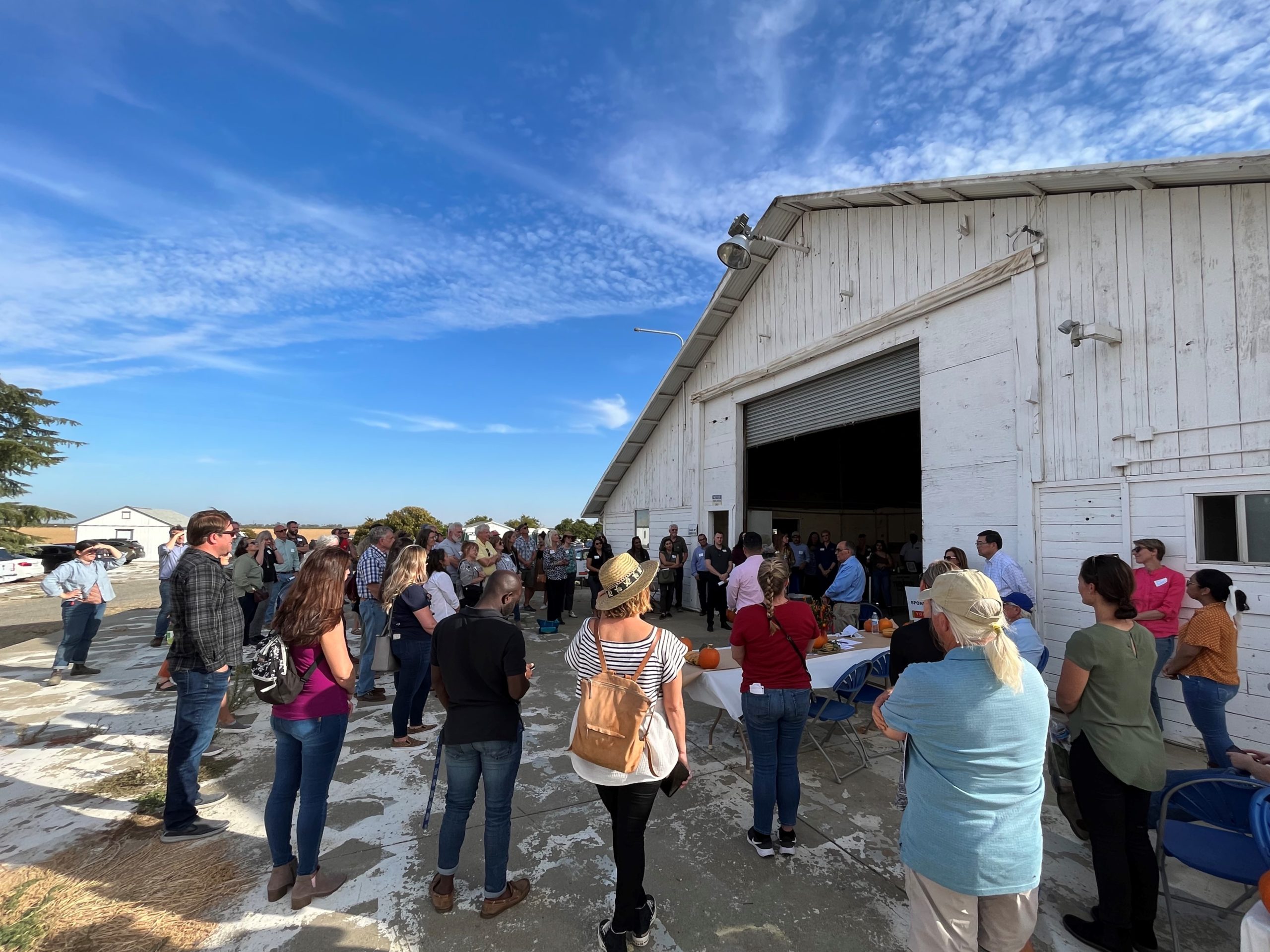
On Friday, October 21st, 2022 – a new home for food and agricultural infrastructure opened its doors to more than 115 people from across the region. The historic 22,000 square-foot Oakdale Barn, located in Esparto, California is over 100 years old, and as the anchor facility for the Yolo Food Hub Network, it will continue to serve the region’s agricultural industry. The Barn facility will be renovated to aggregate, process, store, package, and distribute produce grown in Yolo County and throughout the region. The facility will increase consumer and buyer access to healthy and diverse local foods, improve farmer and market sales, and will strengthen relationships between farmers, institutions, and local communities. It will open new markets for growers and food producers and will enable large institutions, such as hospitals, event centers, and schools to purchase locally grown foods. The barn warming, hosted by the Yolo Food Hub Network and Valley Vision, garnered the support of numerous organizations and representatives across Northern California.
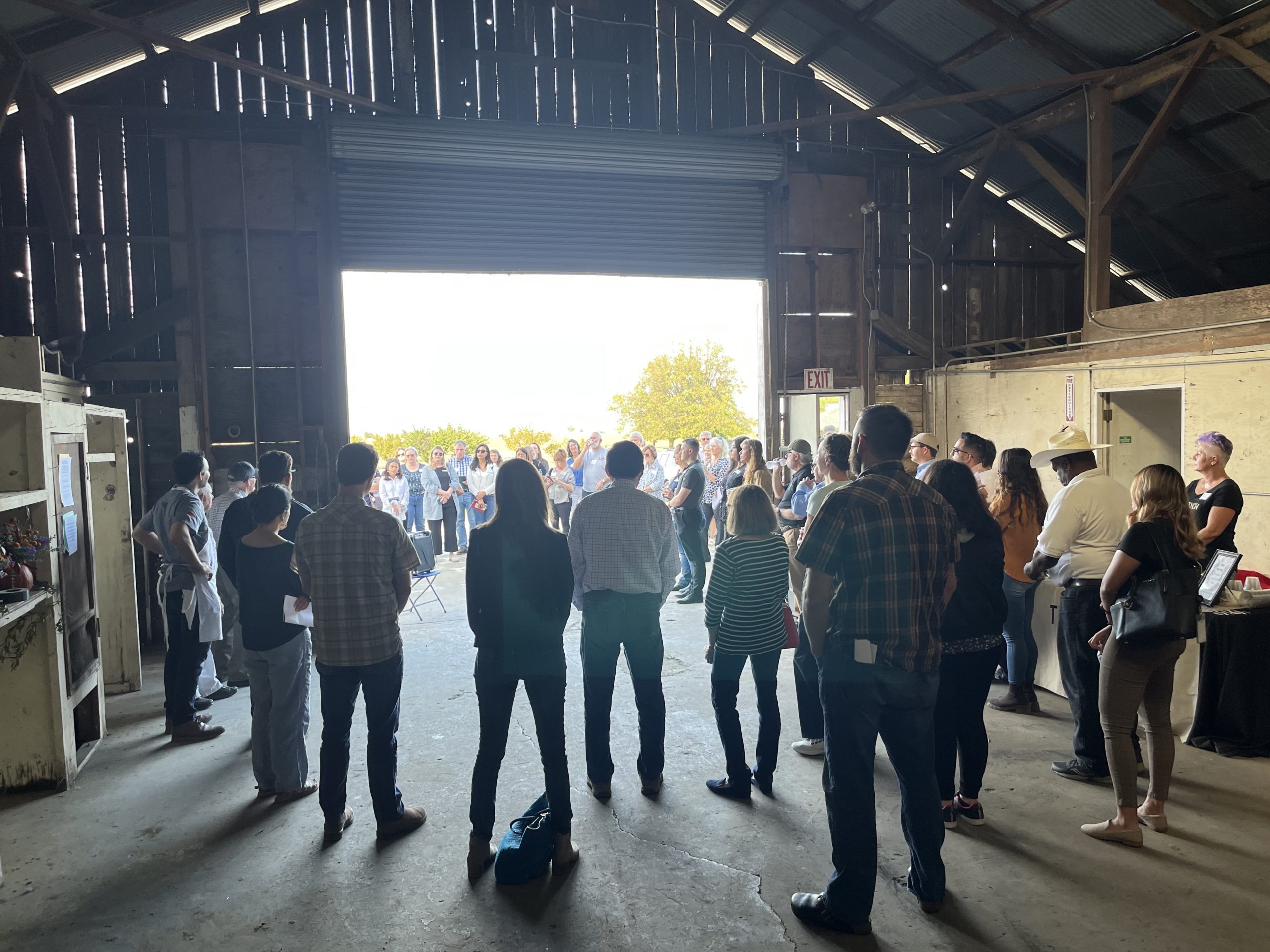

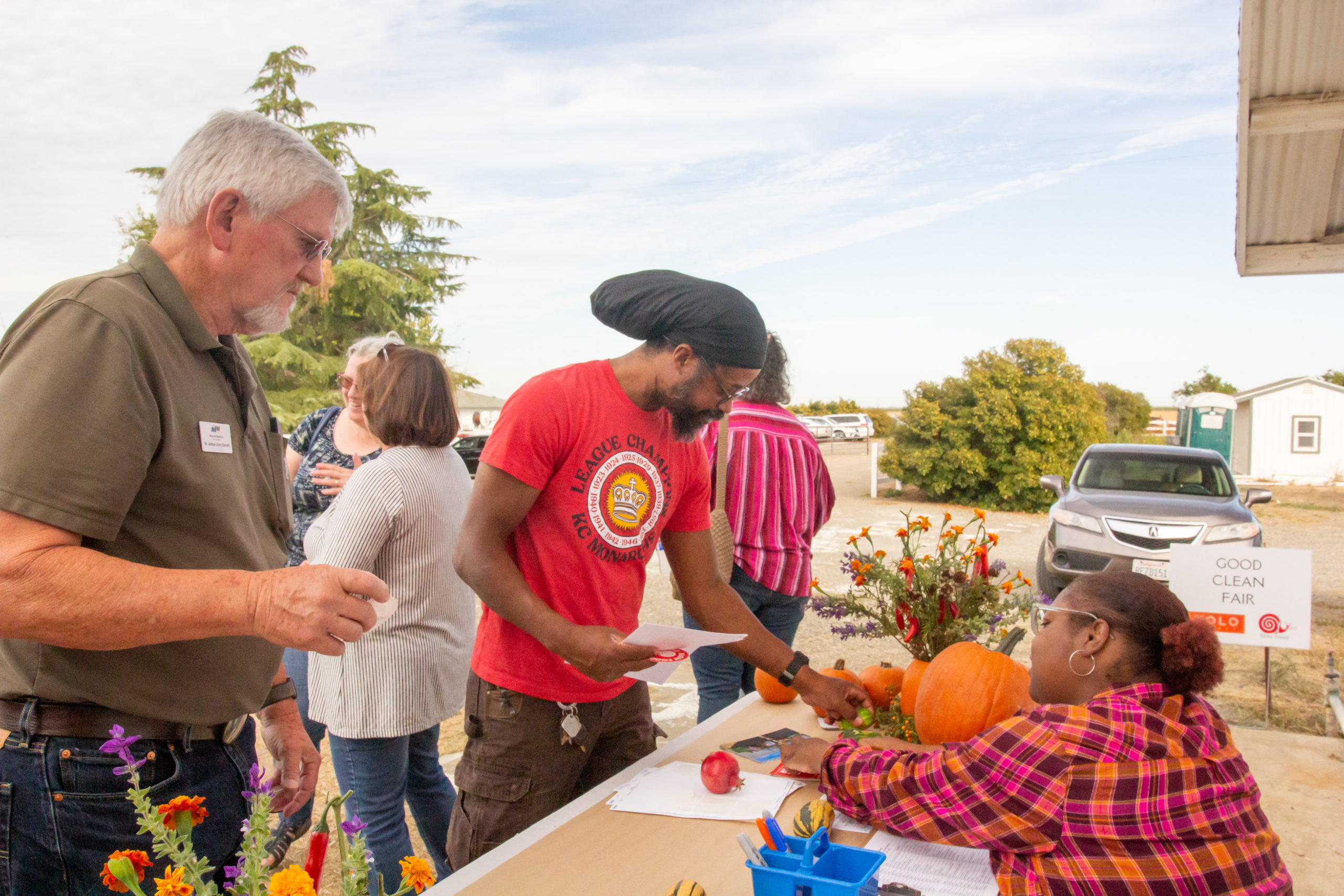
Valley Vision, on behalf of several local partners, was awarded a grant through the Local Food Promotion Program from USDA to support the planning phase of the project. Yolo County committed $2 million of American Rescue Plan funds for the site acquisition.
Food hubs help connect farmers and food entrepreneurs with regional markets and institutional buyers, such as schools, hospitals, and food banks, to access source-identified, locally-grown products. The project’s first phase developed recommendations and a funding strategy to help establish and sustain the new Yolo Food Hub Network and facility. As part of the planning phase of the Yolo Food Hub Network, the project will help farmers receive training on how to reach these institutional buyers, which will buy produce and goods from Yolo Food Hub Network partners.
The Yolo Food Hub Network project team includes New Season Community Development Corporation (NSCDC) – the project developer, Capay Valley Farm Shop (CVFS), Yolo Food Bank, Durst Organic Growers, Spork Food Hub, Esparto Train Station, Hatamiya Group, Kitchen Table Advisors, and Valley Vision as the project manager.
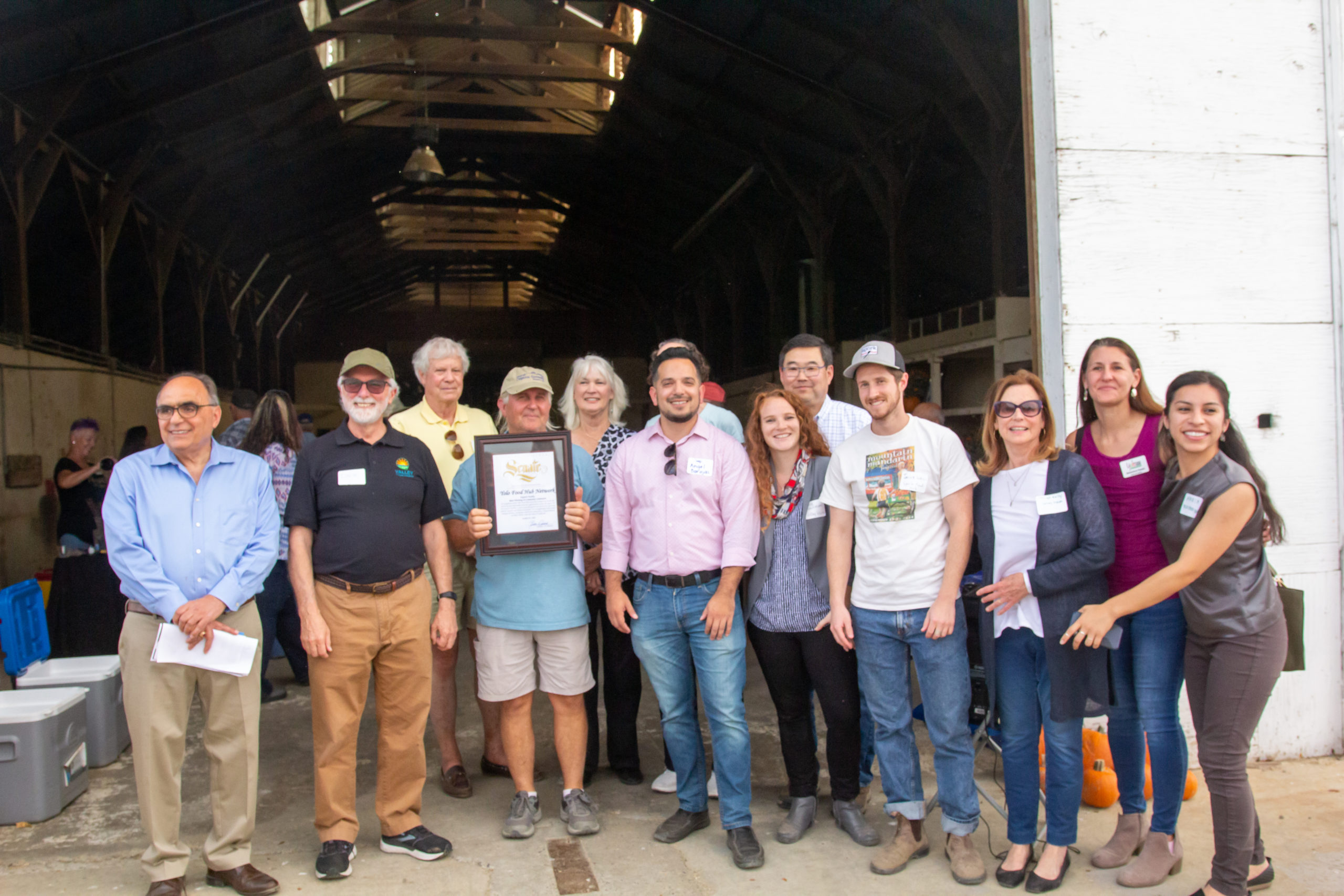
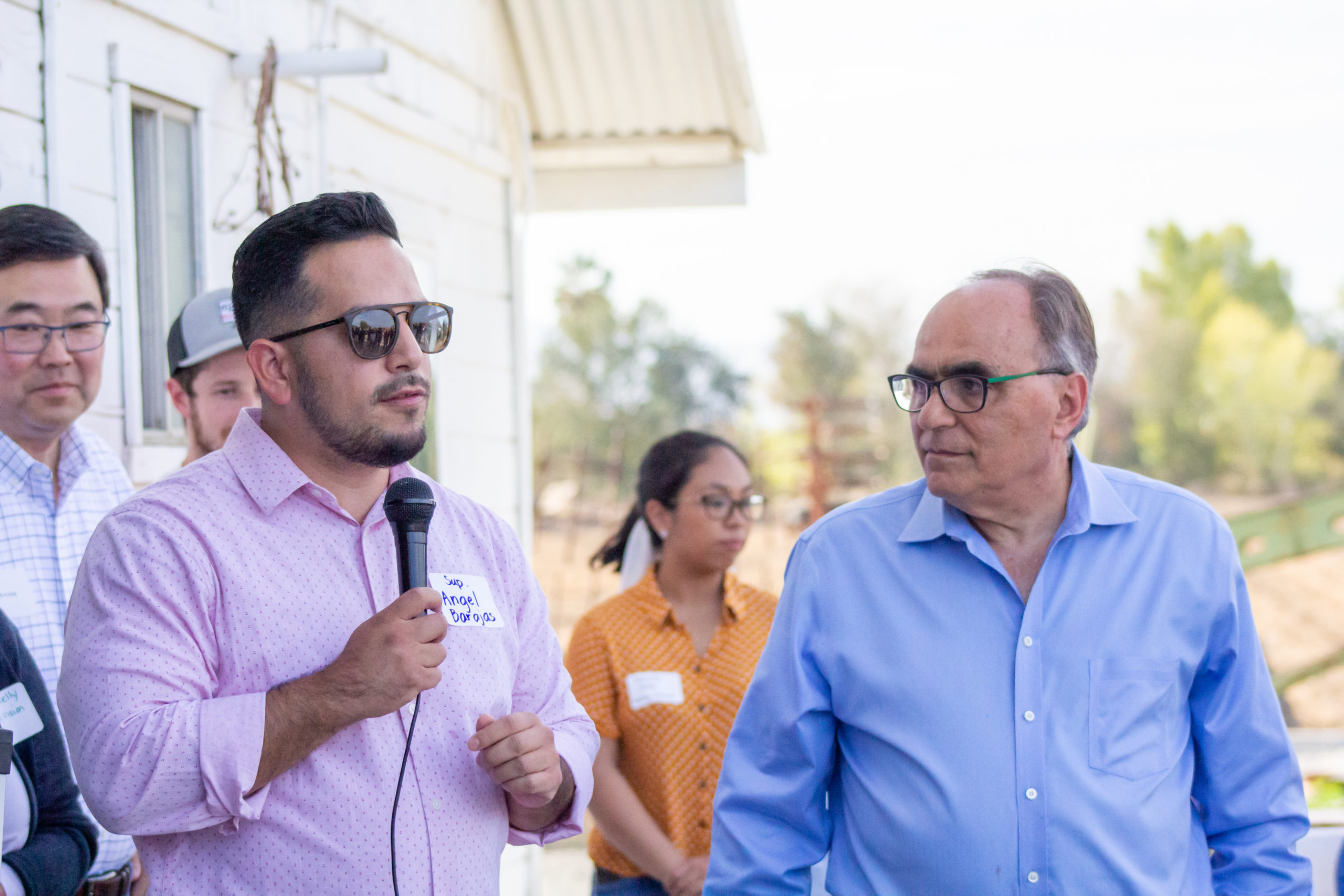
Many elected officials joined the celebration, including California Assemblymember Cecilia Aguiar-Curry District 4, California State Senator Dodd of Senate District 3, (Staff present), as well as Yolo County Supervisors Angel Barajas (Chair), Don Saylor, Jim Provenza, and Woodland City Council members Tom Stallard and Tania Garcia-Cadena.
Also in attendance was James Corless, Executive Director of the Sacramento Area Council of Governments (SACOG). Through SACOG’s Rural Urban Connection Strategy (RUCS), SACOG has supported the planning and feasibility of food hubs throughout the region, including the 2014 food hub feasibility analysis, which served as the foundation for the Yolo Food Hub Network.
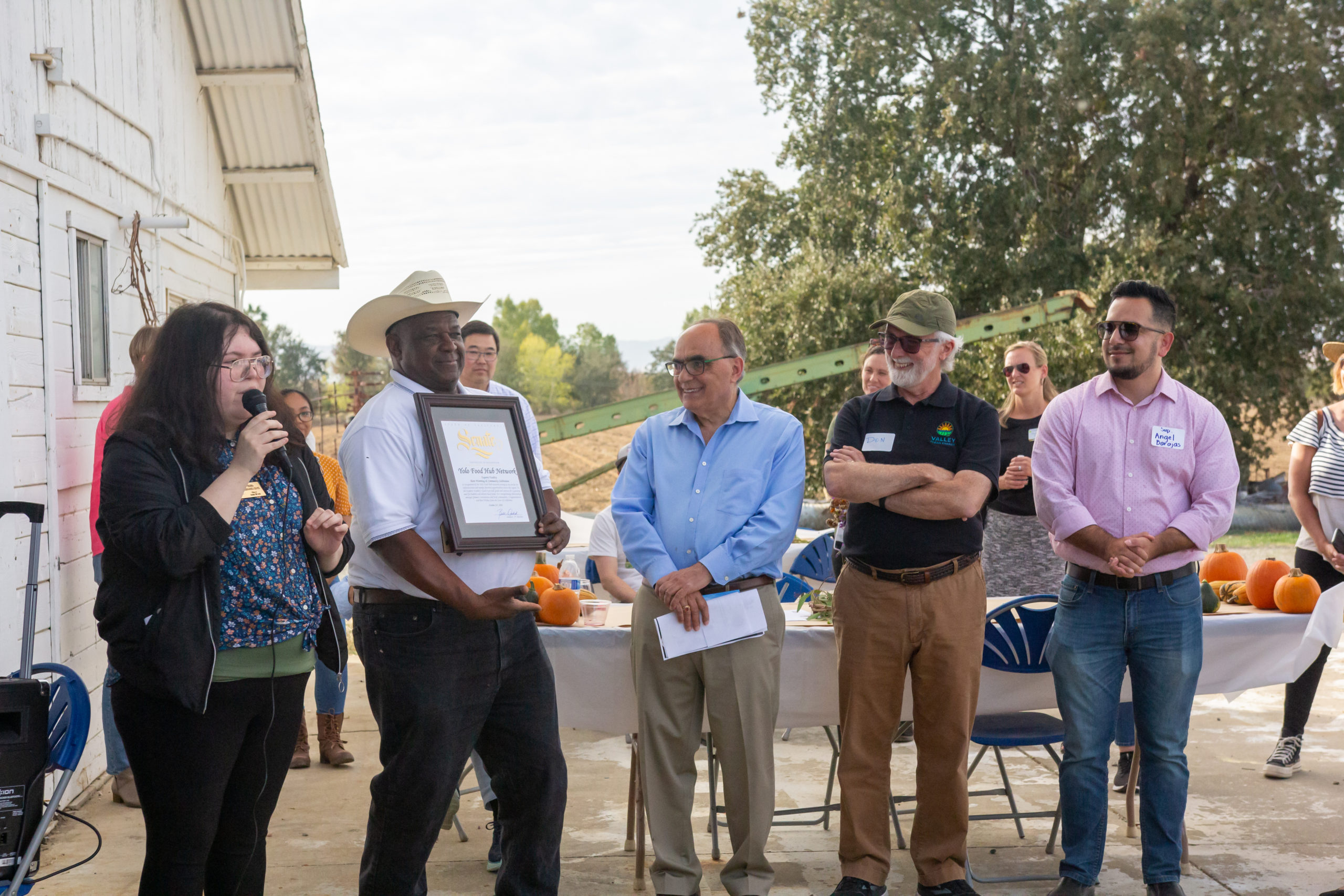
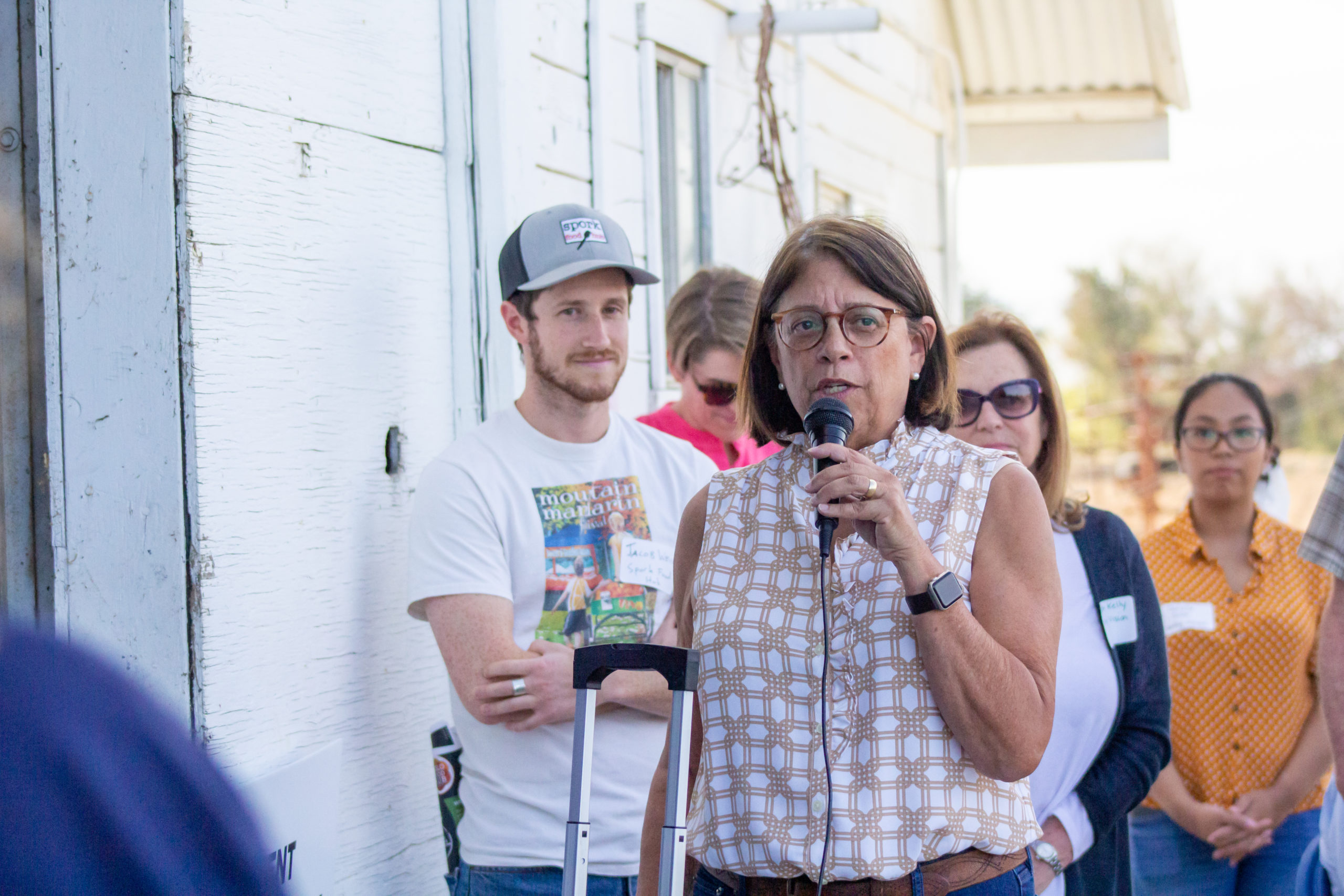
This event would not have been possible without the generous support of Slow Food Yolo, Turkovich Family Wines, and the hard work of Juan Barajas and his team. Slow Food is a global, grassroots organization, founded in 1989 to prevent the disappearance of local food, cultures, and traditions. Slow Food believes food is tied to many other aspects of life, including culture, politics, agriculture, and the environment.
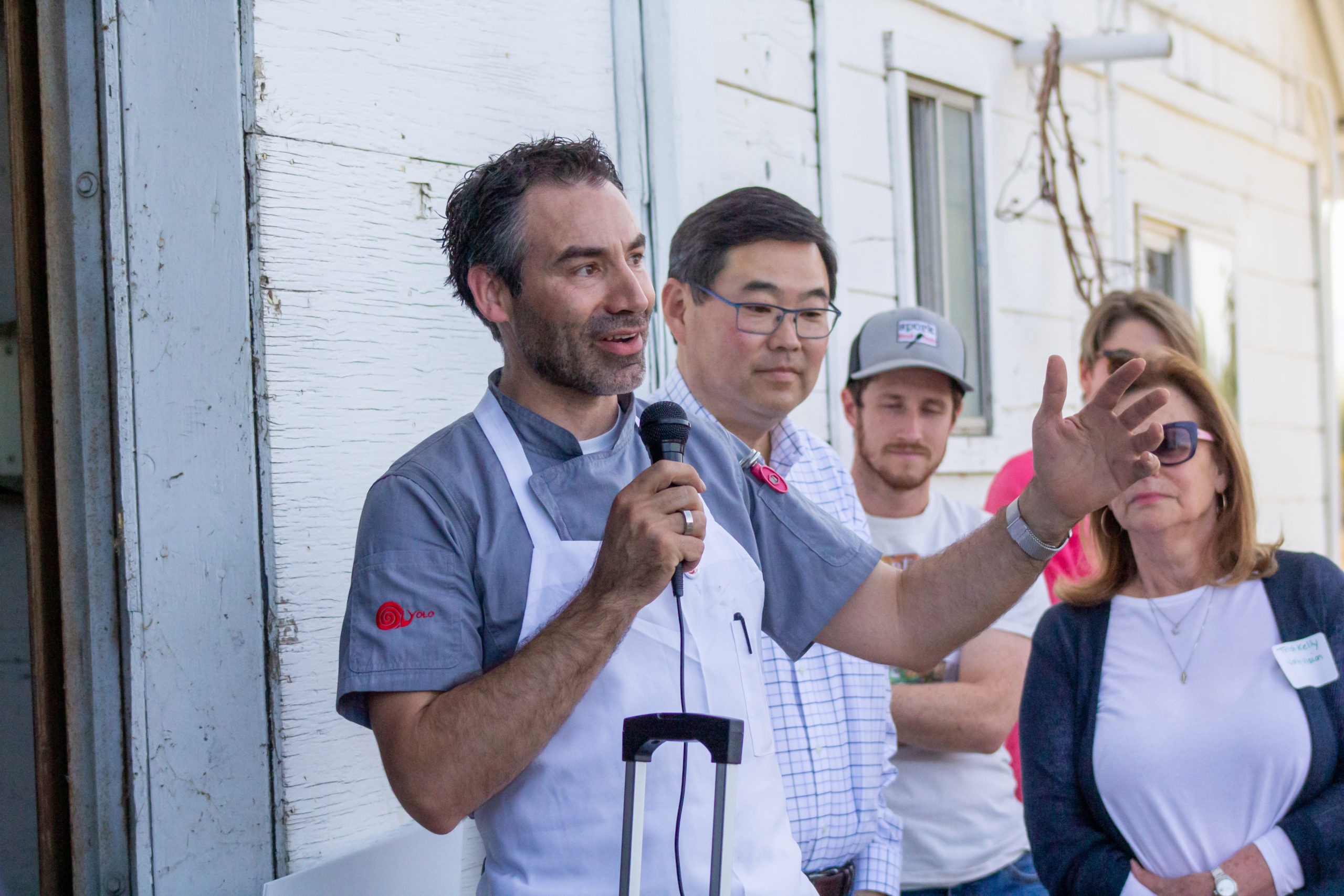



To learn more about the Yolo Food Hub Network, including past webinars and reports, visit: https://www.valleyvision.org/projects/yolo-food-hub.
For questions about Yolo Food Hub Network or if you want to receive future resources and information on the upcoming Food and Agricultural work from Valley Vision, please contact Grace Kaufman at Grace.Kaufman@valleyvision.org to be added to the listerv!
Grace Kaufman is a Valley Vision Project Manager working in the Food and Ag and Clean Economy impact areas
Watch the recap video from the Barn Warming & Celebration below!
Sacramento Region Awarded $5 Million for Inclusive Economic Planning
Sacramento, CA – October 21, 2022: The Sacramento Region scored a significant win via an award of $5 million dollars in planning money from the Community Economic Resilience Fund (“CERF”) program.
The program – developed and led by the Employment Development Department (EDD), the Governor’s Office of Business and Economic Development (Go-Biz), and the Governor’s Office of Planning and Research (OPR) – advances regional economic recovery and resilience strategies that prioritize the creation of accessible, high-quality jobs in sustainable industries.
“This is a once-in-a-generation opportunity to advance our region’s economic recovery and resilience, and will demonstrate the collective value and impact our region has when we work together,” said Valley Vision CEO Evan Schmidt in a statement.
Planning dollars will be used to stand up a High Road Transition Collaborative (“Collaborative”) – a planning group that consists of balanced and meaningful representation from throughout the region – and a regional economic development plan.
In a months-long grant application process, Valley Vision convened multiple open-to-all webinars, workshops, subregional roundtables, and activity-based committees to inform our region’s application. In particular, the Prosperity Partnership, the Tahoe Prosperity Center, the Sierra Business Council, Yuba-Sutter Economic Development Corporation, the Nevada County Economic Resource Council, and the counties of Colusa and Yuba were instrumental in bringing regional stakeholders and community partners to the table.
As the designated Regional Convenor and Fiscal Agent for the Sacramento Region – which includes Colusa, El Dorado, Nevada, Placer, Sacramento, Sutter, Yolo and Yuba counties – Valley Vision is charged with standing up a planning process that engages meaningfully across subregions, sectors, and communities, to advance the goals of the CERF program.
“This announcement signifies a major step forward in economic development, as regional coalitions have come together across California ready to roll up their sleeves and build regional economic development strategies that will create more inclusive and vibrant economies built on a foundation of equity,” said Dee Dee Myers, Senior Advisor to Governor Newsom and Director of the Governor’s Office of Business & Economic Development. You can read the state’s CERF press release here.
A Sacramento Region virtual kick-off event will be held in early 2023. To stay up to date, subscribe to Valley Vision’s Sacramento Region CERF newsletter.
###
About Valley Vision
For 27 years, Valley Vision has served as a trusted nonprofit civic leadership organization in the region, bringing communities together to tackle our region’s challenges and ensure a more livable future and creating common ground built on facts through trusted research and meaningful coalition-building.
Driven by a “triple bottom line” approach of co-equally advancing social equity, economic prosperity, and environmental sustainability, Valley Vision has a proven record in bringing diverse groups together to develop long-term solutions to the region’s greatest problems. This history of civic leadership and engagement runs across local, regional, and statewide platforms, and across sectors and disciplines. To learn more about Valley Vision’s CERF work, visit www.valleyvision.org/projects/community-economic-resilience-fund.
Media Contact:
Priya Kumar
(707) 386-8501
priya.kumar@valleyvision.org
State Workforce Leaders Moving Forward Together
Valley Vision’s Renee John, Director of Workforce Development, recently attended the California Workforce Association’s annual Meeting of the Minds Conference themed Courageous Progress. A central topic was the Governor’s priority on apprenticeships as one of three key workforce strategies to address California’s wide scale income inequality challenges. A five-point action plan was recently released from the Labor and Workforce Development Agency and the Department of Industrial Relations Department of Apprenticeship Standards outlining a strategy to expand apprenticeship in California to meet Governor Newsom’s goal of serving 500,000 apprentices by 2029.
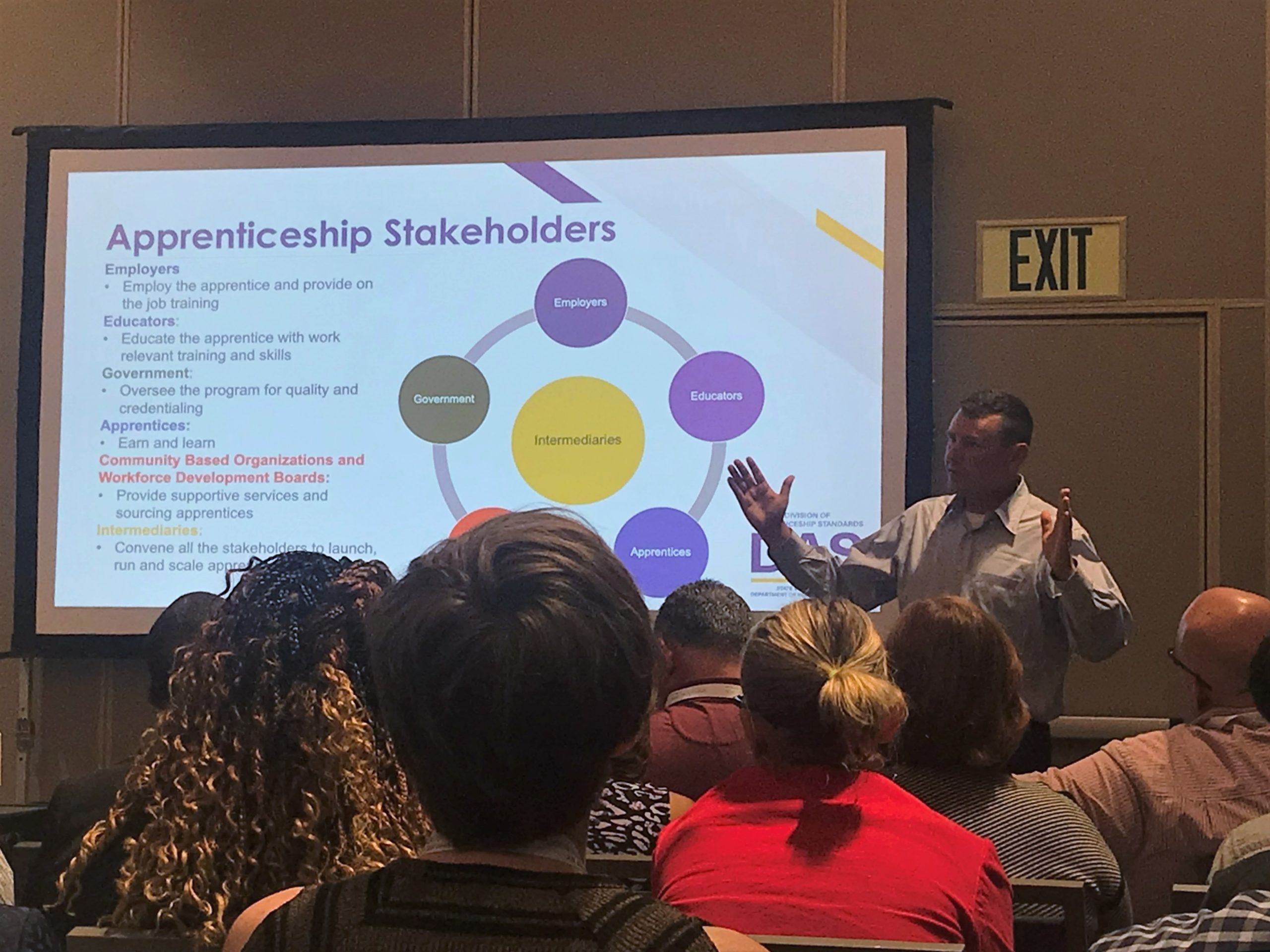
The conference, held in Monterey, featured speakers from across the state including: Tim Rainey, Executive Director California Workforce Development Board; Brent Parton, Acting Assistant Secretary DOLETA; and Eric Rood, Chief Division of Apprenticeship Standards at California Department of Industrial Relations. Informative sessions addressed topics including developing high quality youth and adult apprenticeships, digital upskilling innovations, service delivery models to serve the priority populations including re-entry and individuals with disabilities, and sector specific workforce pipeline initiatives. The importance of strategically aligning efforts between workforce stakeholders was a central theme. Each session featured inventive collaborations between K-12, adult education, community colleges, economic development, community based organizations, and others.
As the workforce intermediary for the Greater Sacramento Capital Region, Valley Vision spends significant resources on convening and alignment, connecting partners in our ecosystem together to develop solutions and function as a cohesive unit in service to their stakeholders. We assist cities, jurisdictions and partners with developing strategies to meet their economic and labor goals. We are a trusted source for quality research on workforce issues and trends to inform on changing market dynamics. And, we continually work to amplify voices and strategies to connect equity to economic prosperity to create a vibrant and prosperous economy for all.
For the more information on Valley Vision’s 21st Century Workforce impact area connect to our website and subscribe to our 21st Century Workforce email newsletter!
Valley Vision’s employer and industry advisories are funded by Los Rios Community College District with Strong Workforce Program funds. Additionally, the Capital Region’s four workforce boards co-sponsor the advisories; SETA/Sacramento Works, Golden Sierra JTA, YoloWorks, and North Central Counties Consortium.
Renee John is the Director of Workforce Development managing initiatives within the 21st Century Workforce impact area.
Recap: White House Conference – Recommendations from America’s Farm-to-Fork Capital

As part of the We Are Farm-to-Fork initiative, Valley Vision convenes partners and community members to support future investments in the region’s food system.
On Tuesday, August 9th, Valley Vision held our first public, in-person event since the pandemic. The information shared by community partners during the listening session will inform the 2022 White House Conference on Hunger, Nutrition, and Health, which takes place in September. Organized under the banner of our community food system network “We are Farm to Fork,” participants included a vibrant cross-section of more than 75 people at Mulvaney’s B&L, including partners from government agencies, nonprofits, school districts, restaurants, health centers, grocery stores, and more (see Appendix A of the report for a full list of participants). It was an honor to have Maria Gallegos-Herrera, the new USDA Rural Development State Director for California, attend and provide opening remarks, as well as have staff from Congresswoman Doris Matsui and Congressman Ami Bera join us and advance the recommendations.
Using the toolkit provided by the White House Conference planners as a guide for regional input sessions nationally, our discussion focused on the following guiding pillars of the Conference:
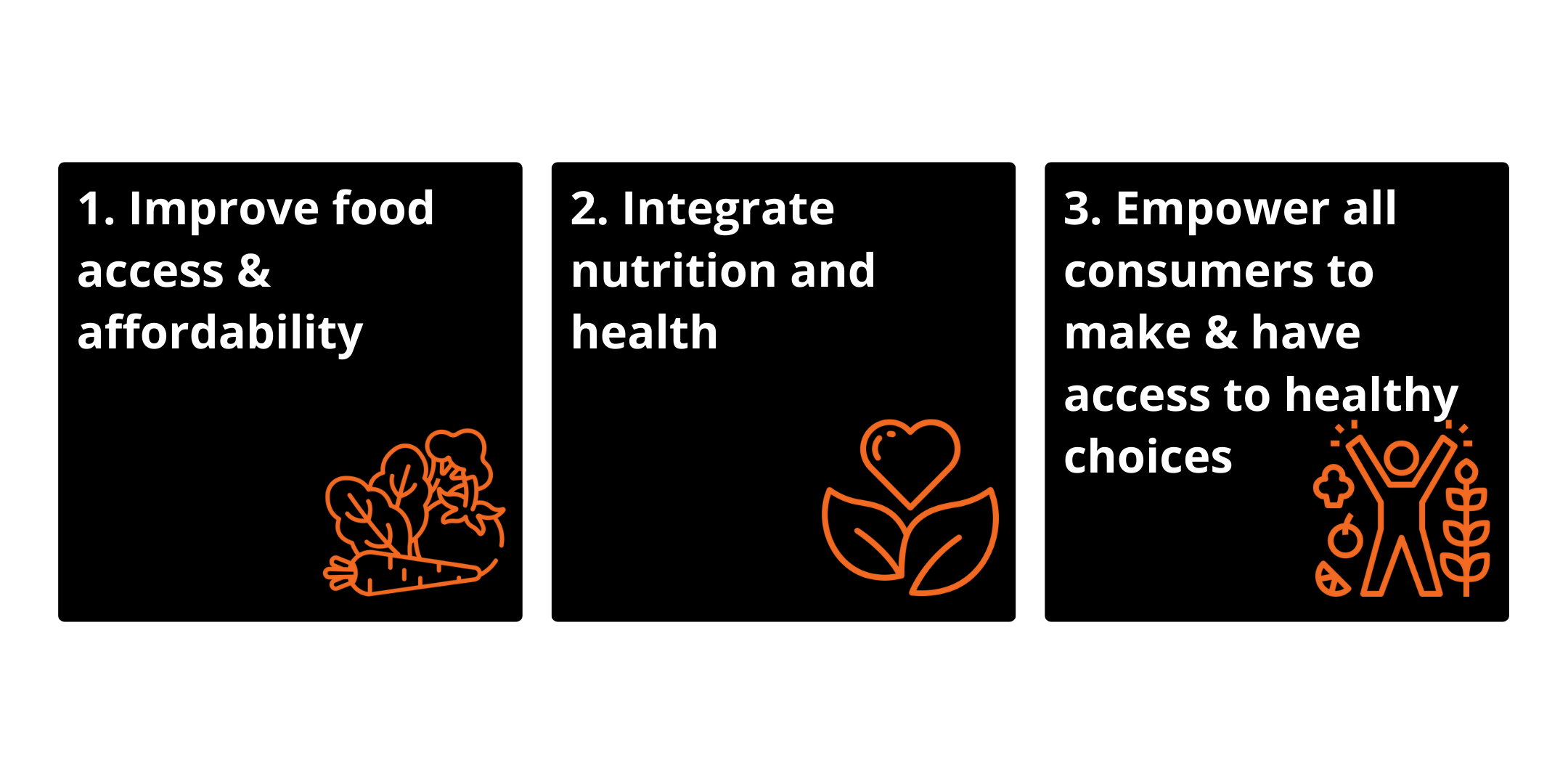
For each of these issues, our event invited input into the following questions provided by the White House Conference planners:
What specific actions should the U.S. Federal government, including the Executive Branch and Congress, take to achieve each pillar? What are the opportunities and barriers to achieving the actions? Actions should include specific policy and/or programmatic ideas and changes as well as funding needs.
What are innovative public- and private-sector activities already happening at the local, state, territory, and Tribal levels that could inform actions at the Federal Level?
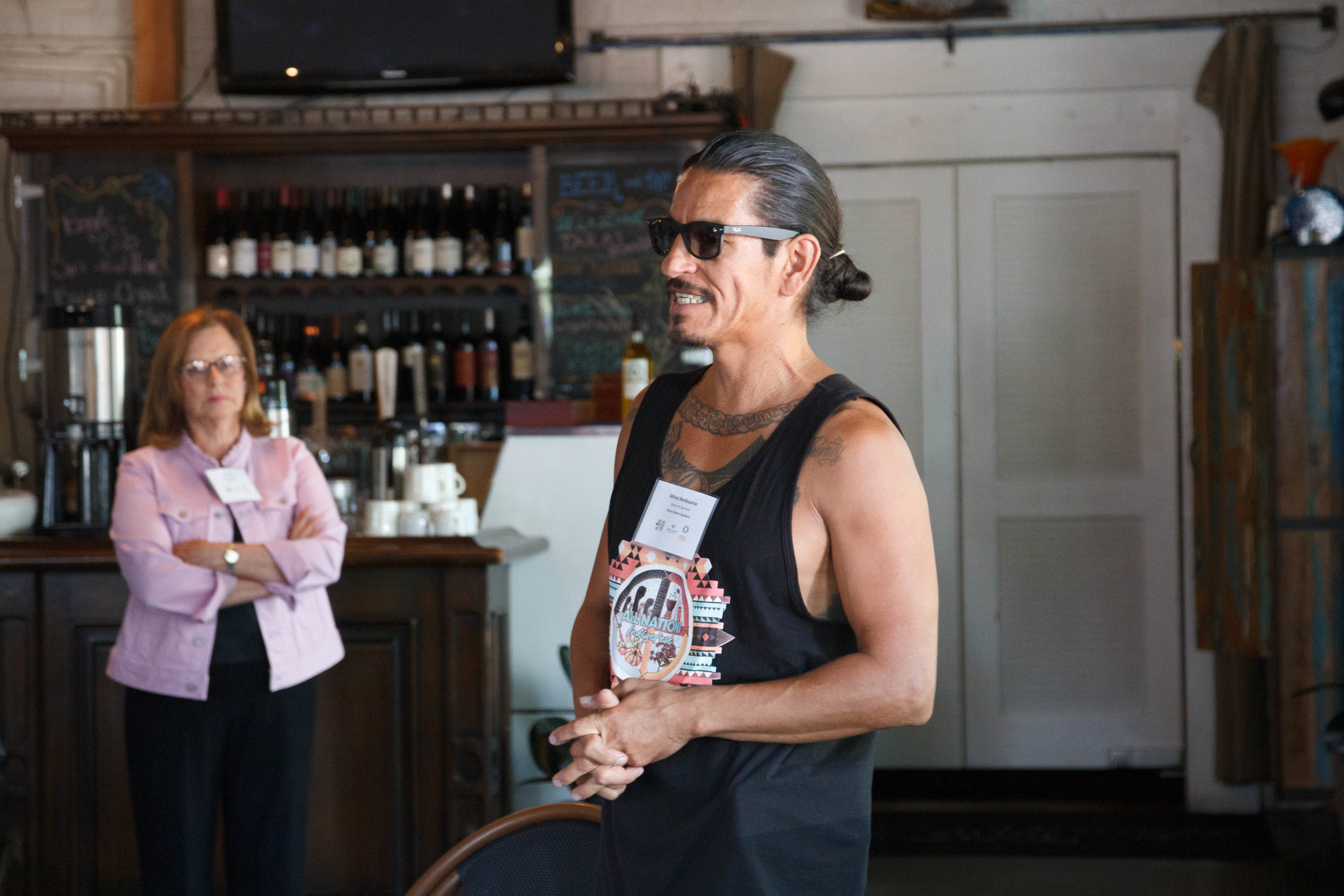
Participants gave feedback online and in-person. During the event, a cross-section of organizations provided lightning-round presentations, highlighting barriers, opportunities, proven models, and recommendations that demonstrated the breadth and diversity of partnerships, the creativity and responsiveness of solutions, and some compelling outcomes to date. These are the foundations of our recommendations to the federal government, which represent the needs and interests of the Sacramento Region. The recommendations range from streamlining specific regulations and providing increased flexibility, to investing in impact models that can be scaled and replicated across the country.
Several clear themes and recommendations were identified in the convening, that if adopted, would greatly facilitate systemic solutions to systemic challenges within our region and across the country. The recommendations reflect the Sacramento region’s partner-driven solutions that were effective in trying to address the rapid increase in food insecurity levels, lack of access to healthy foods, major supply chain gaps, and accelerated job and income loss during the start of the pandemic. Several strong models shared during the event are tangible, tested, and outcome-driven, and are reflected in the recommendations and in the supporting materials.
The recommendations build off the 2021 Sacramento Region Food System Action Plan, developed in Fall 2021 by Valley Vision in partnership with the Sacramento Region Community Foundation. These activities help position the Sacramento region’s future as a global innovator and leader in sustainable agriculture, food, and health.
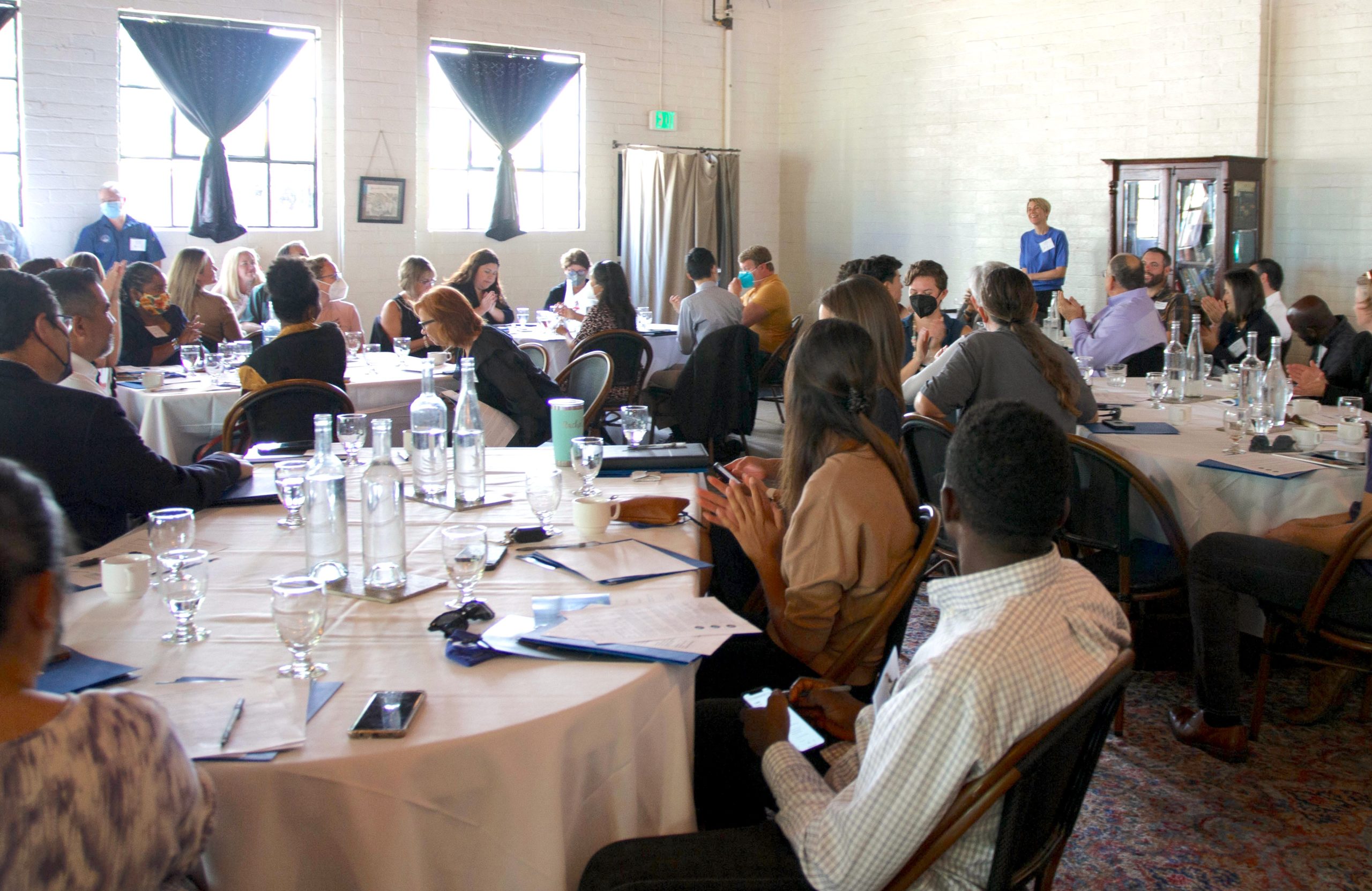
Special thanks to our board members who attended, including Linda Cutler, Shawn Harrison, Chelsea Minor, Clay Nutting, Meghan Phillips, and Lori Rianda. Moving forward, we will incorporate this document into future efforts as we work to reduce food insecurity and strengthen the region’s food system.
To keep up with Valley Vision’s Food and Agriculture work to advance livability in the Sacramento region, email Grace.Kaufman@valleyvision.org to be added to the listserv!
Grace Kaufman is a Valley Vision Project Manager working in the Food and Ag and Clean Economy impact areas
Get Connected! California: A Call to Action
New Campaign Helps to Close the Digital Divide by Providing Affordable, High-Speed Internet to Low-Income Families

The COVID-19 pandemic laid bare throughout our region and nationally the existing and pervasive disparities in access to affordable, reliable high-speed Internet. These disparities accelerated through the rapid shift to remote work and learning, online access to vital services, e-commerce, and social connectivity. This Digital Divide hinders the upward mobility of unserved and underserved communities, resulting in inequities across all aspects of life, with profound economic and social impacts on communities.
One important solution to bridging the Digital Divide is the Affordable Connectivity Program (ACP), a Federal Communications Commission (FCC) program helping families and households get connected to affordable broadband and devices through a monthly subsidy. The program helps to ensure that eligible households can access affordable high-speed internet for school, work and healthcare, among many other needs.
However, enrollment levels for this important program are very low. More than 385,000 households are eligible for this program in our region, but only 89,675 households have enrolled – just 23% overall. There are still more than 295,000 eligible households which are unenrolled, a gap of 76% must be filled in order to bridge the Digital Divide. Enrollment rates vary by county – see table below. We are leaving behind subsidies for our families worth millions of dollars in monthly Internet subscription fees behind.
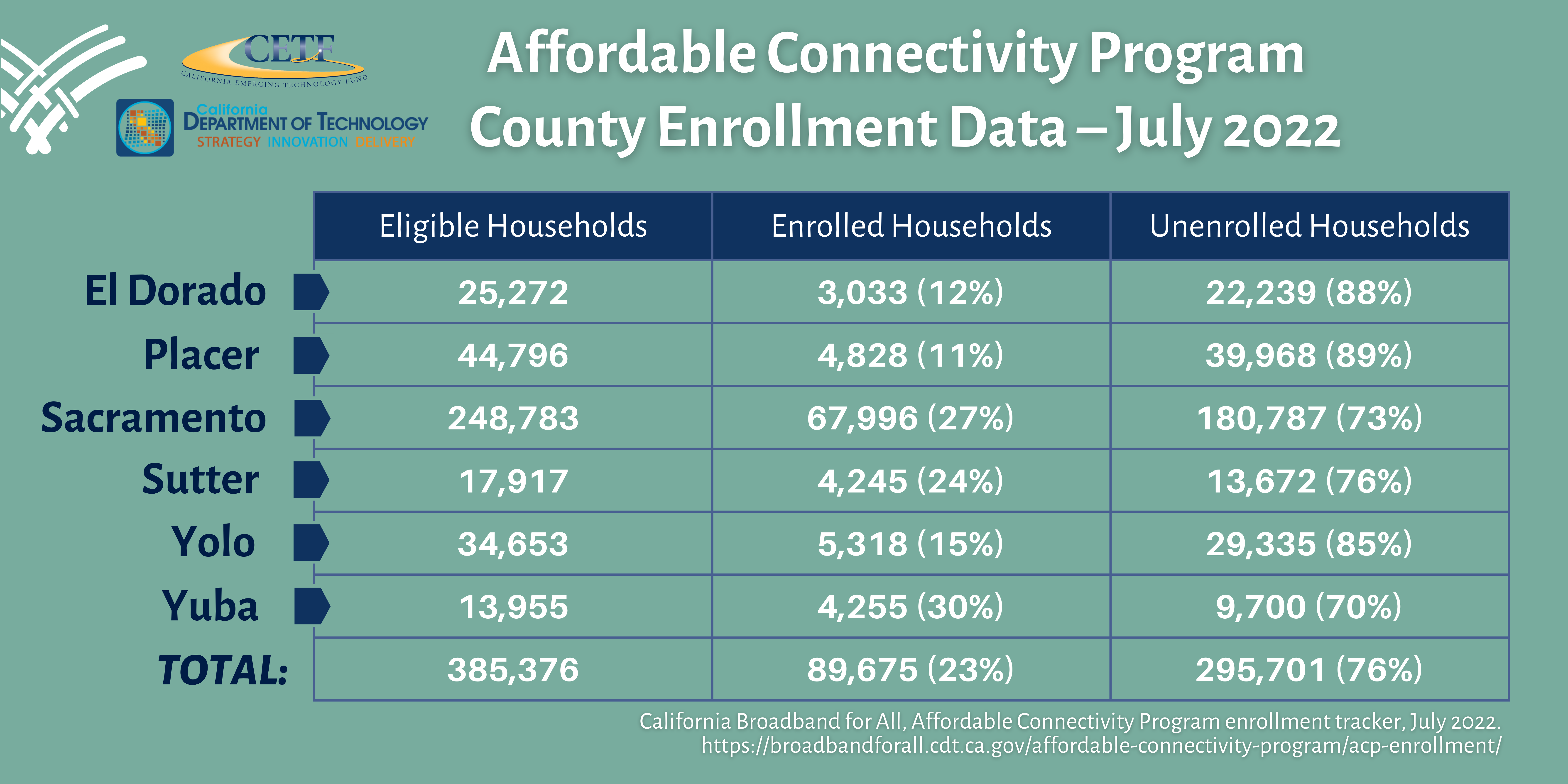
Call to Action: CETF Get Connected! CA Statewide Mobilization
A similar gap statewide is why California leaders are mobilizing to greatly expand ACP enrollment. In March 2022, the California Broadband Council (CBC) issued a “Call to Action” to get 90% of all eligible low-income households online by 2024 with high-speed internet service, and 95% by 2027.
In response, the California Emerging Technology Fund (CETF), along with the California Department of Technology (CDT), California Department of Education (CDE), California State Library, and California State Association of Counties (CSAC), are coordinating a statewide mobilization campaign to promote the Affordable Connectivity Program (ACP) known as GetConnected! California.
Through this campaign, partners will distribute ACP information to all eligible recipients, and are working together with a statewide network of community-based organizations (CBOs) who are the “trusted messengers” to organize in-person sign-up locations to assist residents in ACP enrollment.
The direct communications and mobilization campaign is focused on August 2022 as the first Get Connected! California month, when students are returning to school and in coordination with back- to-school activities. The mobilization efforts will distribute information about the ACP benefit, eligibility requirements, and where to get enrollment help to reach every family with a child on the National School Lunch Program (NSLP), all participants on Medi-Cal and CalFresh, Pell grant students, and library patrons in priority neighborhoods throughout the state.
Get Connected! California mobilization is happening now! Given that 90% of the ACP-Eligible Households are on Medi-Cal, CalFresh, and National School Lunch Program, the first phase of organizing has been to ensure that all Counties and Schools (with support of State Agencies) are preparing to reach all the households on these public assistance programs.
In our region we are working with partners on strategies to enroll eligible households for the ACP. Some of the activities include:
- Promoting Get Connected! California through local contacts
- Distributing information to eligible households
- Hosting an enrollment assistance site on Get Connected! California Day – August 27, 2022
- Coordinating Get Connected! California activities for your county
- Supporting future Get Connected California! events and activities, including back to school activities
- PSA placement
With all our combined efforts, unserved and underserved households who are eligible will have access to affordable high-speed internet and we will be one step closer to bridging the Digital Divide. Let’s all mobilize together to bring broadband access to the most disadvantaged communities!

Thank you to all our partners, and a huge thank you to the California Emerging Technology Fund (CETF) in leading this “Call to Action” and for supporting Valley Vision in this effort!
See below for more information on the ACP program.
The FCC’s Affordable Connectivity Program (ACP): Who is Eligible?
Program Benefits for Eligible Households:
- A discount of up to $30/month for internet service
- A discount of up to $75/month towards internet service for households on qualifying Tribal lands
- A one-time discount of up to $100 towards purchase of laptops, computers, or tablets from participating providers
Affordable Connectivity Program Eligibility:
Per the FCC program guidelines, a household is eligible if the household income is at or below 200% of the Federal Poverty Guidelines, or if a member of the household meets at least one of the criteria below:
- Received a Federal Pell Grant during the current award year;
- Meets the eligibility criteria for a participating provider’s existing low-income internet program;
- Participates in one of these assistance programs:
- The National School Lunch Program or the School Breakfast Program, including through the USDA Community Eligibility Provision;
- SNAP
- Medicaid
- Federal Public Housing Assistance
- Supplemental Security Income (SSI)
- WIC
- Veterans Pension or Survivor Benefits
- or Lifeline;
- Participates in one of these assistance programs and lives on Qualifying Tribal lands:
- Bureau of Indian Affairs General Assistance
- Tribal TANF
- Food Distribution Program on Indian Reservations
- Tribal Head Start (income based)
Visit California Department of Technology’s webpage for Broadband For All to track enrollment in your county and region, where up to date information and enrollment progress is made available by CETF in partnership with the Geographical Information Center at Chico State Enterprises (CSE).
To continue staying up to date with all of the region’s broadband efforts, subscribe to Valley Vision’s e-Connect email newsletter!
Kathy Saechou is a Valley Vision Project Associate supporting its Clean Economy and broadband initiatives.
Trish Kelly is Valley Vision’s Managing Director, leading its food, agriculture, and broadband initiatives.
Caitlin Blockus and Navreet Hundal also contributed to the writing of this blog.
A Dose of (Climate) Reality
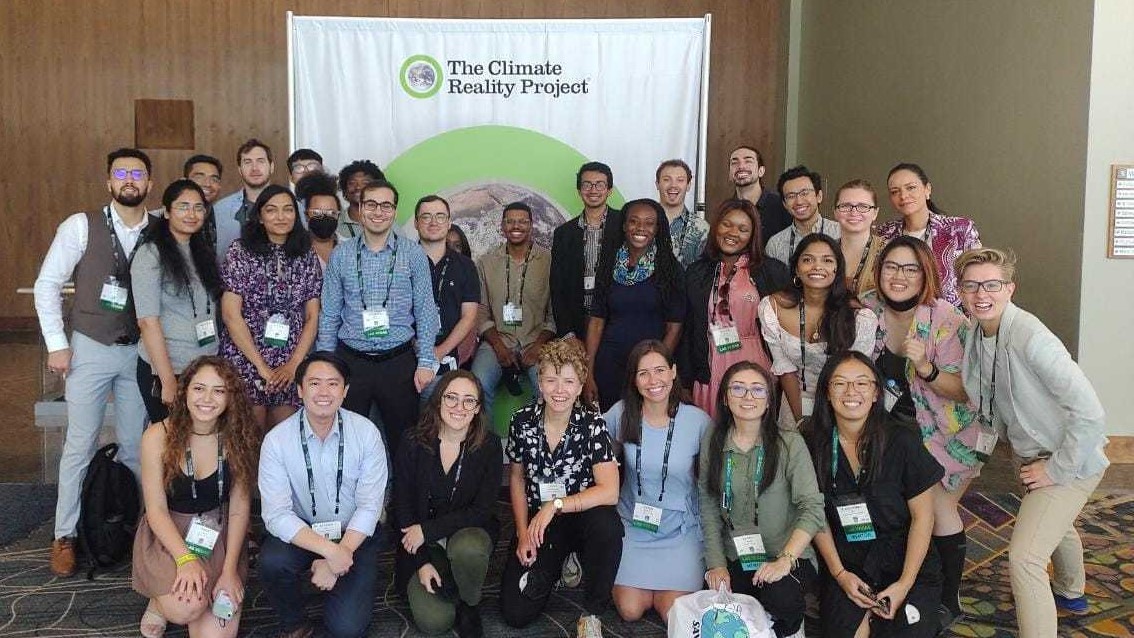
A blast of 109-degree air hit me as I exited the absurdly air conditioned Planet Hollywood casino on the Las Vegas Strip. It was June 10th, 2022, and Southern Nevada was having its hottest day of the year (thus far).
Ironically, I was there to learn, collaborate, and connect as part of the 2022 cohort of the Climate Reality Leadership Corps. So much for glitz, glamour, and excess – things were getting very real in the Nevada desert.
The Climate Reality Project is the organization founded by former Vice President Al Gore using proceeds from the unexpected success of 2006’s ‘An Inconvenient Truth’ film and accompanying book. Today, the organization is an international nonprofit on the leading edge of education and advocacy related to climate change, and the Leadership Corps program is intended to build the capacity of climate leaders and their networks for action.
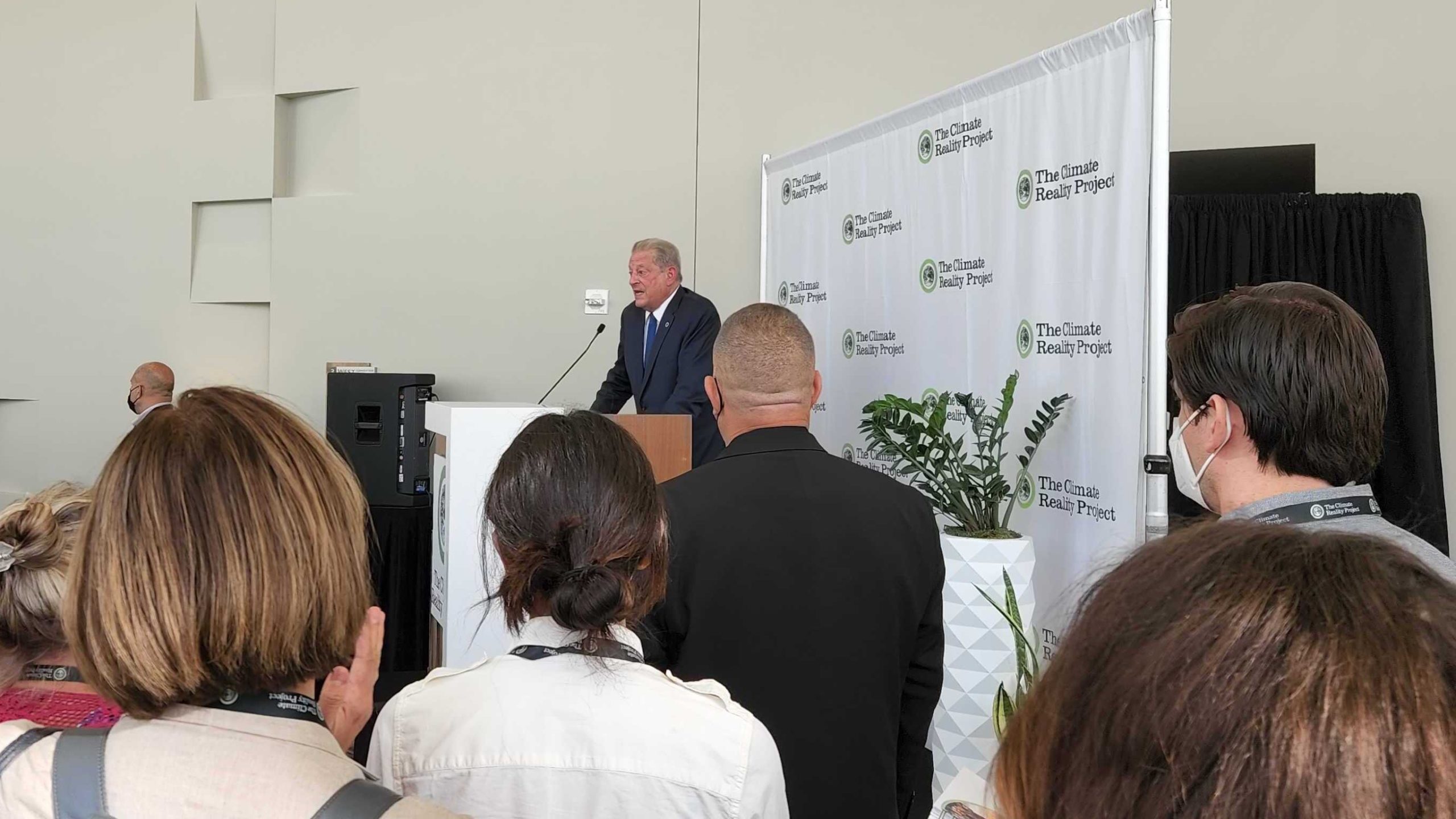
Mr. Gore continues to anchor the organization in many ways, but over the course of two-and-a-half days we were able to get to know Climate Reality’s talented and diverse staff, as well as activists, scientists, and skilled communicators from across the Americas, including dozens of Indigenous leaders on the frontlines of climate action in their communities (with an emphasis on the American Southwest). I was particularly excited to connect with William J. Barber III, Climate Reality’s Director of Climate and Environmental Justice and the son of William Barber II, a well-known preacher and co-chair of the national Poor People’s Campaign, as well as Dr. Elena Krieger, Director of Research with PSE Energy (Physicians, Scientists, and Engineers for Healthy Energy) and a partner in community air protection projects in California.
There is strong connectivity with the work that Valley Vision has been doing for years to advocate for clean air policies, advance neighborhood-based air monitoring and emissions reduction efforts, and to support innovative projects like the California Mobility Center.
That being said, I was participating primarily as a member of the Global Shapers – Sacramento Hub, a local group affiliated with the World Economic Forum’s international network of over 14,000 young leaders across 448 city-based Hubs in 146 countries. The Sacramento Shapers have been working with Climate Reality locally on a water conservation project, conducting door-to-door outreach, distributing resources, and providing micro-grants to artists working on water conservation-related projects.
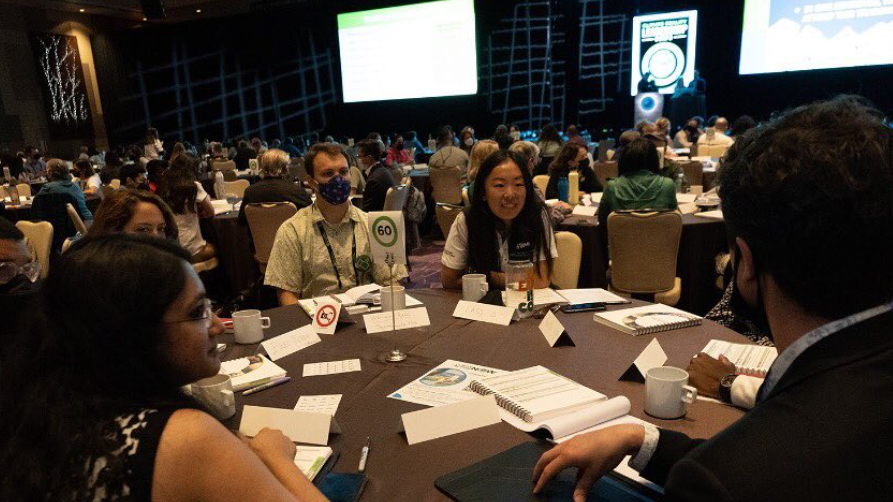
Leadership Corps participants were treated to a full-length, up-to-date version of the famous ‘An Inconvenient Truth’ PowerPoint presentation on the first day of the training, as well as a shortened 10-minute version, both delivered by Mr. Gore. We also learned how best to communicate about climate change, and reflected on our own personal brand of climate activism taking into account our unique skills and backgrounds. We developed and practiced hands-on skills, and were presented with powerful information about the latest climate science, best practices, and technological advancements needed to support a global transition away from greenhouse gas use.
The training made very clear the linkage between the global climate crisis and the environmental racism faced by the communities of color most impacted by climate change. People of color in the US are exposed to up to 63% more pollution than they produce – while white people are exposed to 17% less. Fossil fuel air pollution contributed to nearly one in five premature deaths in 2018. Sometimes the climate crisis can feel nebulous to those who don’t reside in frontline communities, and this relationship is incredibly important to make evident when doing this work.
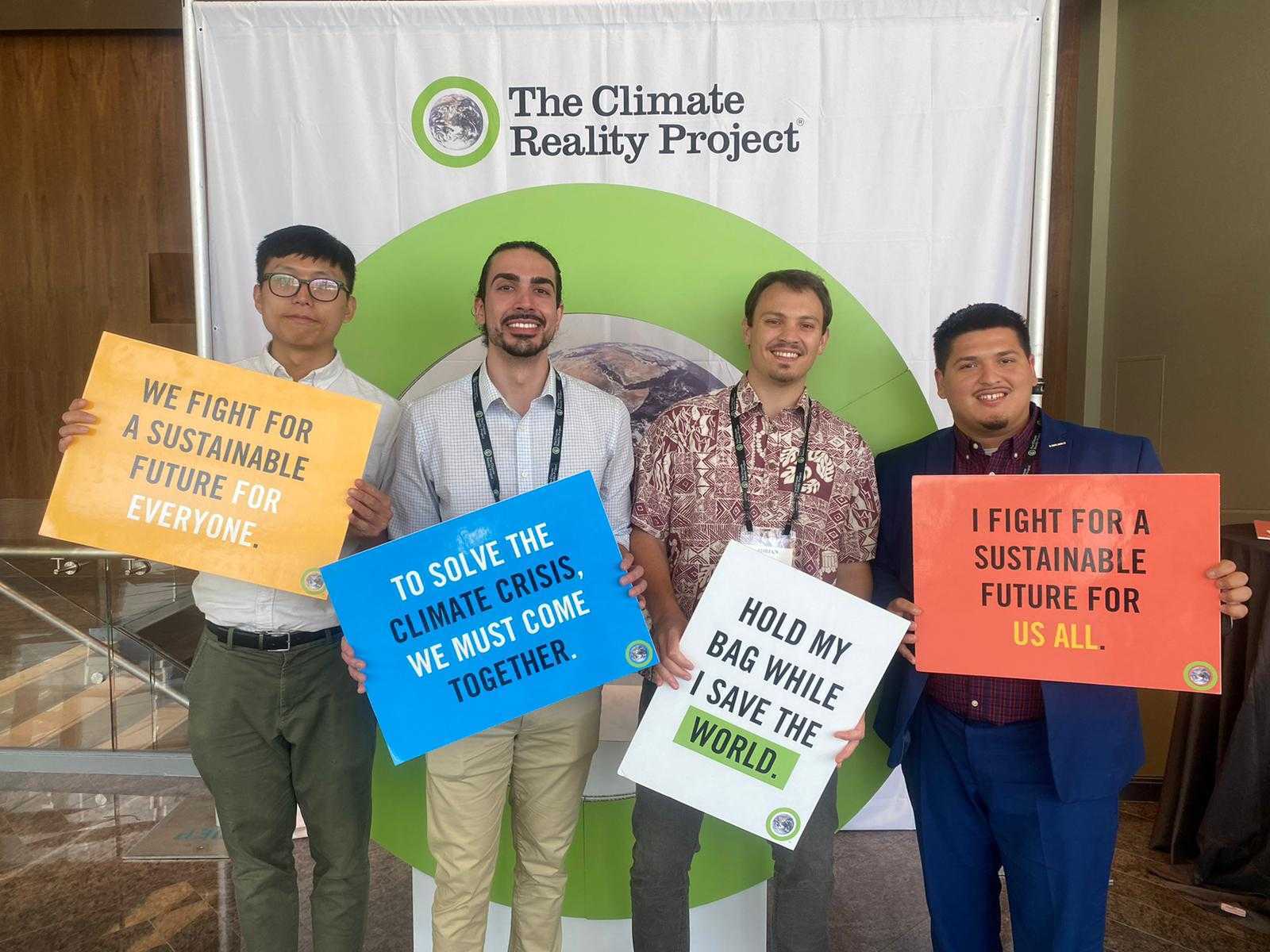
Across the world-class speakers and hands-on trainings, there were several direct quotes that really resonated with me:
- Shabd Singh: “How do you build people power? The answer is simple – one conversation at a time.”
- Van Jones (not present): “The green economy should not just be about reclaiming throw-away stuff. It should be about reclaiming thrown-away communities.”
- Alexa Aispuro Loaiza: “White allies can support communities of concern in the following way – lead by following.”
- Tim Guinee: “Action is the antidote to despair about the climate crisis.”
All that being said – hope is critical if there is to be progress. Despair is just another form of denial. And if we truly care about our planet and its people, we will build the relationships, educate our communities, and advocate for solutions that benefit those most impacted. I’ll end this blog the same way that Mr. Gore closed the two-and-a-half-day training: “Political will is a sustainable resource.” Let’s do this!
Note: Masks were required at all times except during meals and while taking photos, as a COVID-19 precaution. Photos used as part of this blog do not reflect the in-person experience.
To keep up with Valley Vision’s work to advance livability in the Sacramento region, subscribe to our Vantage Point email newsletter!
Adrian Rehn is a Valley Vision Project Leader overseeing the Cleaner Air Partnership, Sacramento Neighborhoods Activating on Air Quality, and Valley Vision’s flagship ‘Vantage Point’ email newsletter.
Cap-to-Cap Returns to D.C. – A First-Timer’s Experience
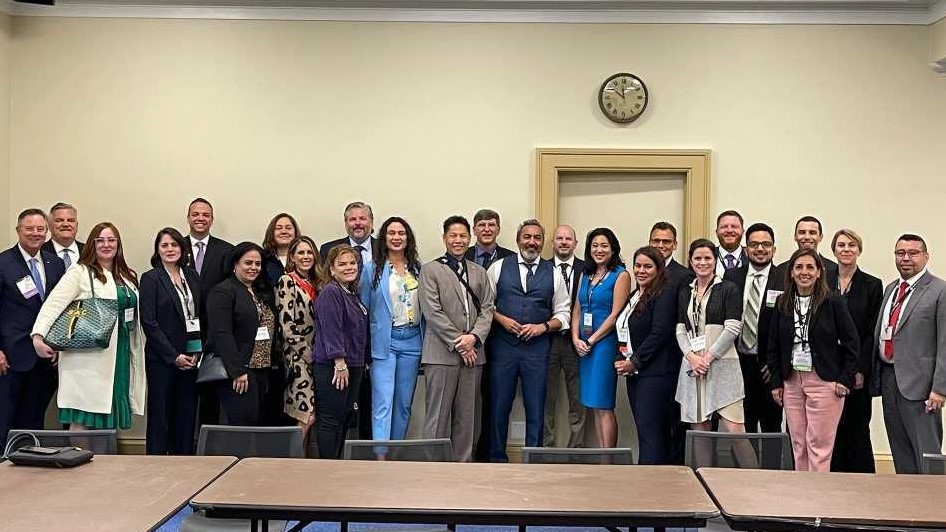
After over two years of a mostly virtual work environment, I didn’t quite know what to expect from the Sacramento Metro Chamber’s annual week-long Cap-to-Cap program. Not only would it be my first Cap-to-Cap experience, it would also be one of the first few times since March 2020 that I would be interacting with folks face-to-face, instead of Zoom square-to-Zoom square. In conversations with “veterans” (those who’ve attended prior Cap-to-Cap trips), I gathered that it was going to be a whirlwind week of events, meetings, and huddles — with few chances to catch a breath, and many opportunities to connect with regional and federal leaders.
To be sure, our region’s annual delegation to D.C. is a force – The Chamber’s Cap-to-Cap program has been happening nearly every year since 1970, representing the largest and longest-standing delegation of its kind. In that time, Cap-to-Cap has driven steady and consistent advocacy, ushering significant advances for business and community development, an inclusive economy, and a vibrant, healthy and connected region.
This year, Valley Vision staff played an active leadership role in Cap-to-Cap’s policy advancement. We Co-Chaired or served as Issue Experts on the Air Quality, Economic Development, and Food and Agriculture teams, and participated in the Workforce and Education team. On each team, we shaped policy papers and communicated critical regional issues to federal agencies and our elected officials, as well as continued building a network of relationships with federal legislative and agency representatives that continues throughout the year and brings added benefit to the region.
It was an honor to be able to champion our region side by side with local elected officials and jurisdictions, foundations and nonprofits, utilities, healthcare providers, industry representatives, among many others. And the running joke — that of course we all had to fly clear across the country to meet people from our own region — certainly has some truth to it. Because being in our nation’s capital, against the backdrop of Capitol Hill and the national monuments, with the common goal of elevating the needs and priorities of our region, brings us all together in an exceptionally meaningful way and gives us the opportunity to connect with folks who we don’t regularly cross paths with back home.
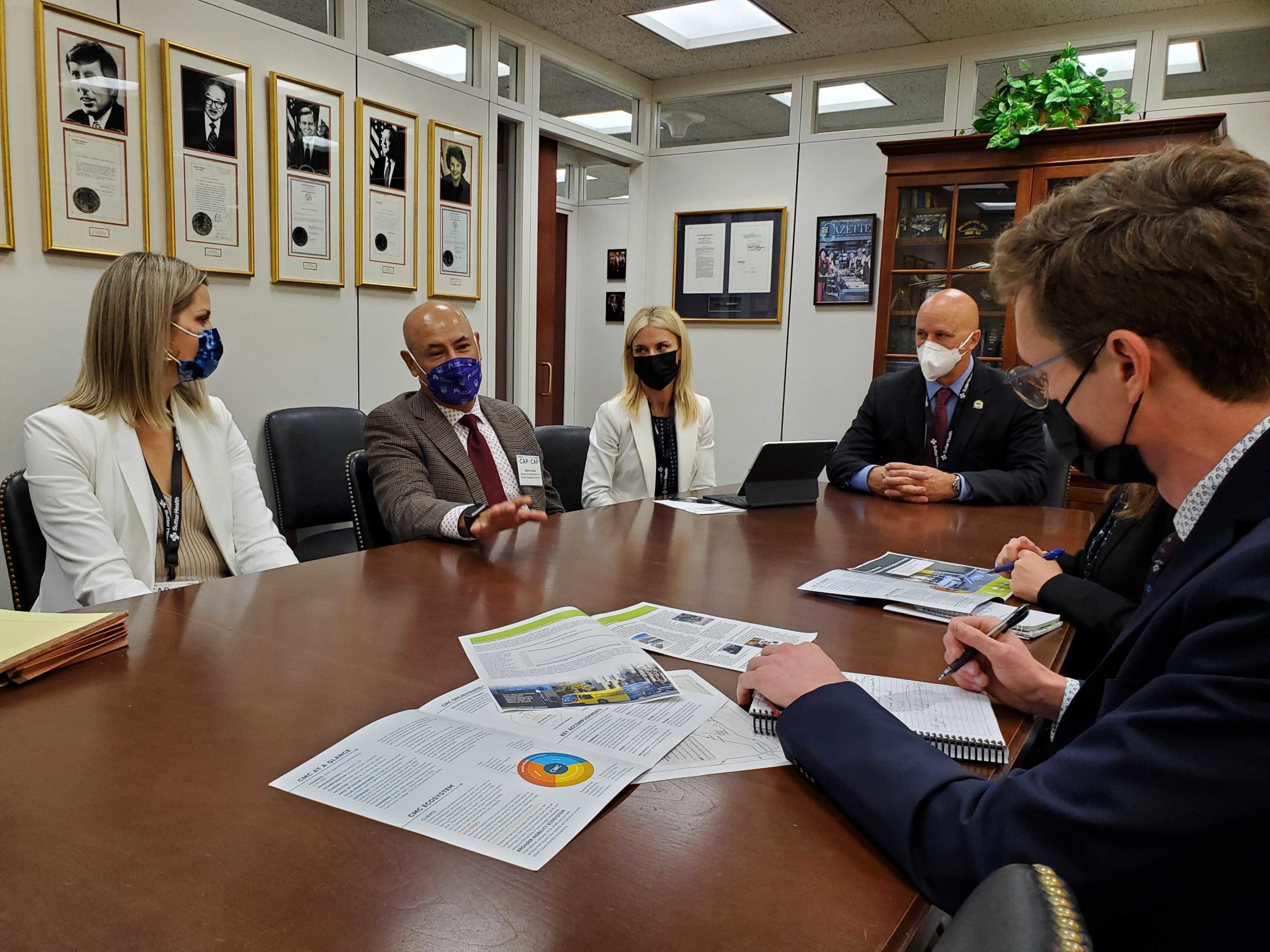
I’m especially grateful to have participated in the Cap-to-Cap program at such an important time for our region. New, unprecedented investments in regional economic recovery — financial commitments to infrastructure, economic, environmental, and community resilience through both state and federal government channels — present our region with the opportunity to rebuild and grow sustainably, with a commitment to community and equity at the center of it. These include the Community Economic Resilience Fund (“CERF”), a one-time use of State general funds that will distribute $600 million to regions across California to support inclusive and low carbon economic development; a $6 billion investment in California’s broadband infrastructure and enhancing internet access for unserved and underserved communities; and billions in American Rescue Plan Act funds distributed through the Economic Development Administration for advancing high-growth sector and workforce priorities, just to name a few. We’ve certainly got our work cut out for us, to ensure that our region makes the most of this once-in-a-generation opportunity.
Championing our region to elevate its challenges and successes, breaking bread with regional change-makers, making my way around Capitol Hill — my first Cap-to-Cap experience was one for the books, and I’m already looking forward to the next one!
To keep up with Valley Vision’s work to advance livability in the Sacramento region, subscribe to our Vantage Point email newsletter!
Isa Avanceña is Valley Vision’s Manager of Research and Policy.
Our Core Values in Action
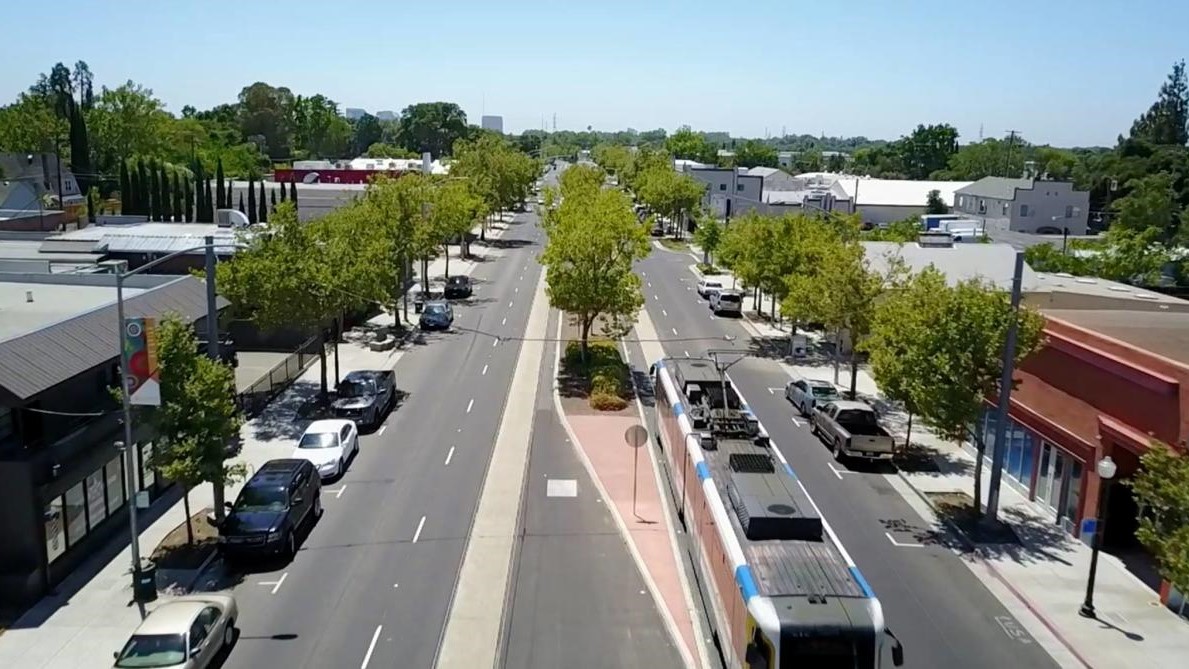
With our mission of creating livable communities by advancing social equity, environmental sustainability, and economic prosperity for the region, Valley Vision has been a constant and steady presence in the area for 28 years.
Our work has always been values-centered, although we haven’t always clearly expressed those values for ourselves or others. Over the past several months, our staff and Board took an exercised approach to tease out the fundamental ideals that drive our work and articulate who we are. We are proud to share:
- STEWARDSHIP: We exist to serve our communities to advance social equity, environmental sustainability, and economic prosperity.
- COLLABORATION: We value building genuine connections that honor our communities and partners.
- COURAGE: We are willing to do hard things.
- PASSION: We are energized by our work and our communities.
Values are only words on paper without commitments and practices that support them. The following depicts our intentions to live out these values.
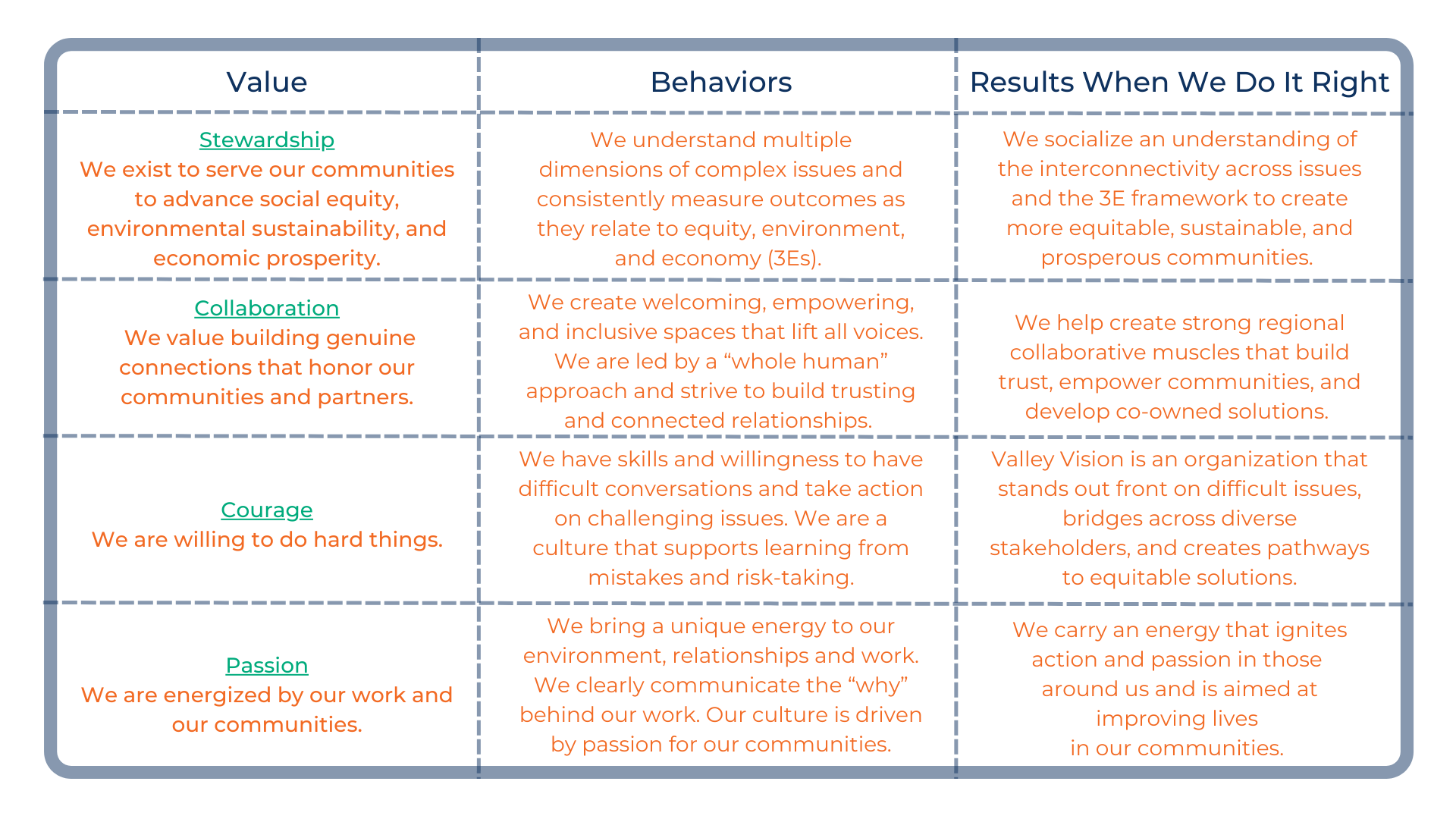
The values that we hold provide a foundation for the work we do and the way we do it. When we are supporting healthy food systems, developing equitable workforce pathways, or launching a new regional initiative for equitable and low carbon economic growth – these values should shine through. Our goal is to ensure that our values are apparent to all who work with us in the ways we engage and activate our work. We welcome your dialogue and feedback.
What are the values that anchor and guide you? Let’s support each other in activating values-driven leadership to foster equitable, sustainable, and prosperous communities.
To keep up with Valley Vision’s work to advance livability in the Sacramento region, subscribe to our Vantage Point email newsletter!
Evan Schmidt is Valley Vision’s Chief Executive Officer.
Digital Inclusion Coalition Expands with New Platform
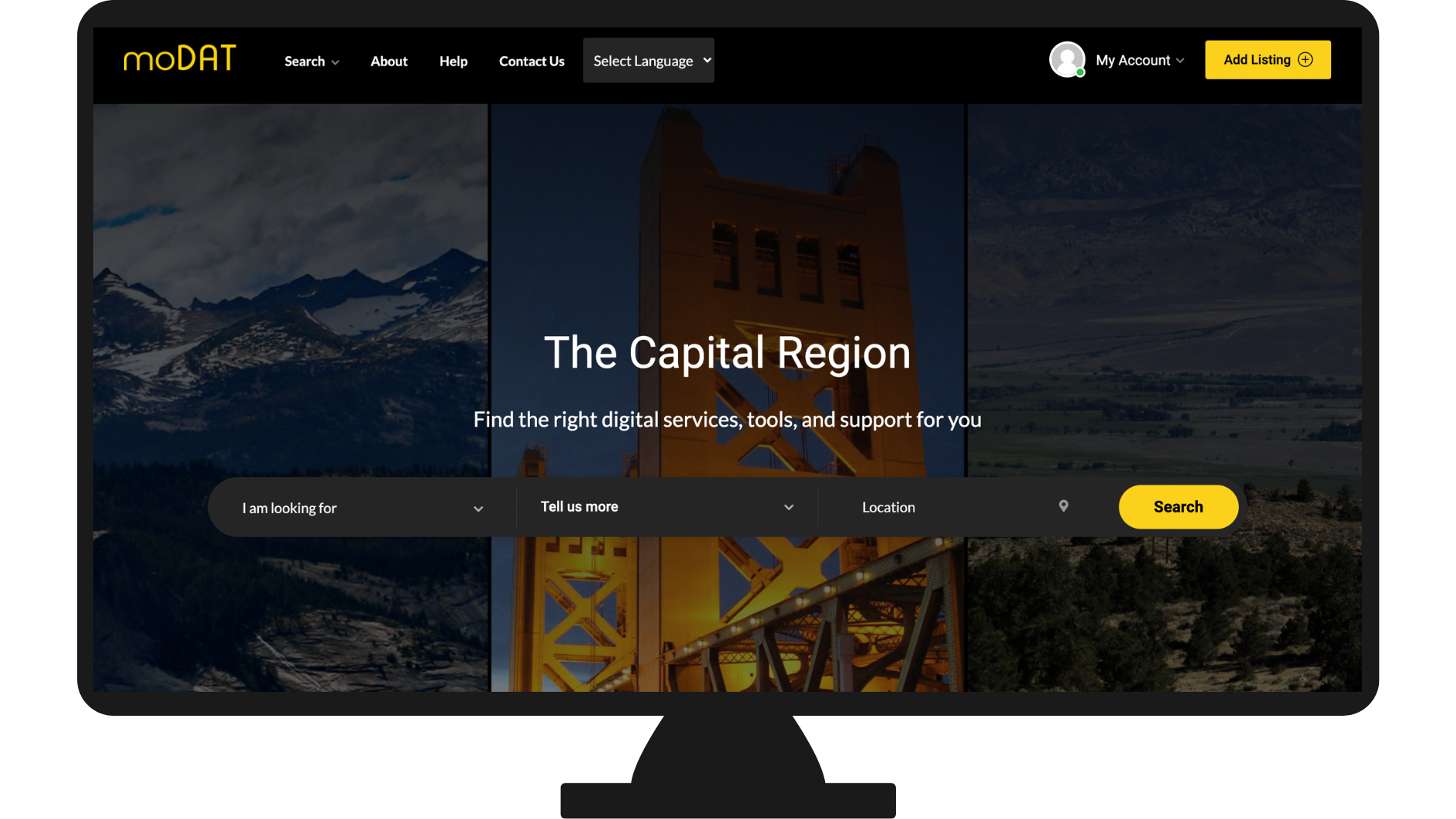
The last two years have proven the significance of digital inclusion to accessing opportunity and economic prosperity. Our nation is experiencing unprecedented investment, including the Affordable Connectivity Program through the Federal Communications Commission (FCC) – a $14.2 billion piece of the Infrastructure Investment and Jobs act, and the biggest investment in broadband this country has ever seen. The Greater Sacramento region is well poised to garner and maximize investments in digital inclusion due in no small part to the dedicated contributions of the steering committee, working groups, and members of the Sacramento Coalition for Digital Inclusion (Coalition).
This effort started in the fall of 2018, inspired by a Brookings Institution report on the strengths and weaknesses of the Sacramento Capital region, and culminated in the formation of the Coalition. Over the years, the work of the Coalition has brought together partnerships, thought leaders, and collaborative investment to address the digital inclusion needs of our region especially during the heightened needs of the pandemic.
A Year of Impact
In the last year, the Coalition has hosted eight full Coalition meetings and over 25 working group meetings in three key areas; Broadband Access & Adoption, Hardware Devices, and Digital Literacy/Digital Skills to build a framework and key strategies including:
- Renaming, redesigning and taking over management of the Coalition website to provide easy access to resources and information
- Operationalizing a digital inclusion portal to provide easy access to free resources for community members and the organizations supporting them
New Name & Expanded Region
The Coalition recently changed its name to the Capital Region Coalition for Digital Inclusion, reflecting an expanded service area and regional approach to creating more opportunities for digital equity. This name change represents the expansion to serve a 9 county region supported by investment from the Capital Region’s four workforce boards, SMUD, AT & T and Union Bank, and magnifies opportunities to address both rural and urban digital equity barriers, and convene organizations from across the region to better inform, connect, and partner to promote community success.
New Digital Inclusion Portal Serving Nine Counties
Valley Vision is pleased to partner with mohuman, a non-profit connecting low-income communities with digital resources, to create the Capital Region Digital Inclusion Portal. Through this partnership, a streamlined platform has been created for the Capital Region, allowing community members and those serving them to easily search for resources – including free and low cost computers, internet services, digital skill building tools and training. Among other resources, the Digital Inclusion Portal connects individuals with training on Microsoft Office and Google Suite, as well as career search skills and more! The platform also allows organizations with digital inclusion resources to add their information to the Portal (after a review process) and claim their listings to provide additional description and detail.
Nishal Mohan, Founder of mohuman, describes the work of the Coalition and the impact of the Portal: “The Capital Region and their digital inclusion coalition have been doing a fantastic job of regional coordination to serve digitally un and underserved individuals and families. Now with a personalized and easy to use portal, all of their free or low-cost digital inclusion services and resources are available to the public in an easy to use, accessible, expandable, and sustainable platform so that more people can move towards equity faster, more effectively, and at scale. Congratulations to Valley Vision and partners on bringing a powerful tool with the people for the people of the Capital Region!”
The Coalition’s goal is for the Portal to serve as a centralized source for community members and organizations to find and upload resources for computing devices, internet connectivity, and digital skill building. We need your assistance to create an expansive and thorough network of listings and are calling digital inclusion advocates to aid us in the following ways:
- Share the portal with community members and organizations to utilize for easy access to digital resources
- Add listings through the portal or email nghia.nguyen@valleyvision.org with information on digital inclusion organizations, programs, or online services that need to be included
- If you work at or manage an organization that provides digital inclusion resources, claim your listing, and make it your own!
With your help and assistance, we will continue the momentum to improve digital inclusion for our Capital Region’s current and future digital citizens. To keep up with Valley Vision’s work to advance a future-ready workforce in the Sacramento region, subscribe to our 21st Century Workforce email newsletter!
Caitlin Blockus is a Valley Vision Project Manager supporting initiatives within the 21st Century Workforce impact area.
Our Bright Future in 2022: Best Case Scenarios for the Sacramento Region

Valley Vision has a longstanding making “bold predictions for the new year.” This is my second new year as CEO in which I’ve held this responsibility and, I have to say, these years have not been at all predictable! 2021 did not go as anyone predicted, and 2022 has already gone sideways. So, what do I think we can expect for 2022? The unexpected – what else? Instead of dwelling on the uncertainties that we are all living with everyday, I’d like to envision our brightest future and best case scenarios for the Sacramento region in 2022. What can we achieve, even in the face of uncertain times?
Major Economic Recovery Dollars Invested in the Capital Region
State and federal government recovery and infrastructure programs are paving the way for historic investments in economic recovery, workforce, broadband, transportation, climate resilience, and more. With so many competitive grant processes, our region has the opportunity to advance major big picture initiatives and win the dollars to fund them. Our best case scenario: we rise to the challenge as a region and bring in transformative change ushering in equitable recovery for our region. Learn more about and get involved in Valley Vision’s effort to secure Community Economic Resilience Funds for our region as a start.
The Capital Region is a National Leader in Low Carbon Economy and Climate Resilience
Our region has some of the most ambitious emission reduction goals in the nation and the ingredients to make meaningful progress to foster clean innovation in advanced mobility, clean energy, electrification, and climate smart agriculture and overall climate adaptation. In our best case scenario, we advance ambitious and cohesive regional plans and initiatives that make our region more climate resilient and grow our innovative and vibrant clean economy. Check out economic goals identified in the Prosperity Strategy, SMUD’s ambitious 2030 Plan, the California Mobility Center, and SACOG’s Green Means Go initiative for a few examples of our regional commitment to a clean economy.
Sacramento Community Rallies to Address Homelessness
Our unhoused population has increased throughout the pandemic and divisions of how to address housing and homelessness have overtaken our ability to advance reasonable solutions. In our best case scenario: Public agencies, elected officials, civic organizations, service providers, advocates, and residents work together to implement new programming, effectively site new facilities, and meaningfully reduce the number of people who are living unhoused and on the streets. Learn more about the City of Sacramento’s Response Plan.
The Sacramento Region Closes the Digital Divide
There are significant dollars available this year to support the expansion of broadband infrastructure and digital inclusion, resulting in increased access to the Internet and opportunities to improve digital equity in communities throughout the region. In our best case scenario: we are able to capture those dollars; build our broadband infrastructure and address technology access; and create digital literacy and skills training for all who need it (in our best case scenario we win funding to support digital skills training through the Good Jobs Challenge). Learn more about the Infrastructure and Jobs Act and Valley Vision’s work on broadband access and managing the Sacramento Coalition to close the digital divide.
The Comeback of Downtown Sacramento
In 2019, downtown Sacramento was building on the momentum of the Golden 1 Center, breaking ground with Railyards development and the new SAFE Credit Union Convention Center, and more. Then – the pandemic hit. In our best case scenario: downtown picks up where it left off and then some – building on existing assets and embodying a vibrant and equitable pandemic recovery as the economic hub of our region. We envision workers returning to offices, enhanced public transit, a vibrant arts and culture scene, robust tourism and events, and safe, clean, and humane conditions for all. Check out the work of the Downtown Sacramento Partnership.
Are these headlines just pipe dreams? They are optimistic but I believe these scenarios are well within our grasp. We CAN usher in major investments this year and we DO have the ability to advance ambitious, innovative, equitable, and collaborative solutions. There are tremendous and historical investment opportunities, many expressed through the American Rescue Plan, the California 2022-2023 Budget proposal, the Jobs and Infrastructure Bill, and more. In addition to these programs, we have seen how communities have worked together to address the issues that most impact our communities throughout the pandemic, creating lightning-fast emergency response and adapting quickly to meet community needs. We can envision and enact a more equitable, sustainable, and prosperous future for our region. What will be required? A healthy civic culture and dialogue, the creation of shared agendas, a commitment to collaboration, and a willingness to learn and try new things.
Let 2022 be the year that – despite unpredictable conditions and continued challenges – our region finds ways to achieve our best case scenarios and create systems that are stronger, more adaptive, and more equitable, sustainable, and vibrant than ever before.
To keep up with Valley Vision’s work to advance livability in the Sacramento region, subscribe to our Vantage Point email newsletter!
Evan Schmidt is Valley Vision’s Chief Executive Officer.